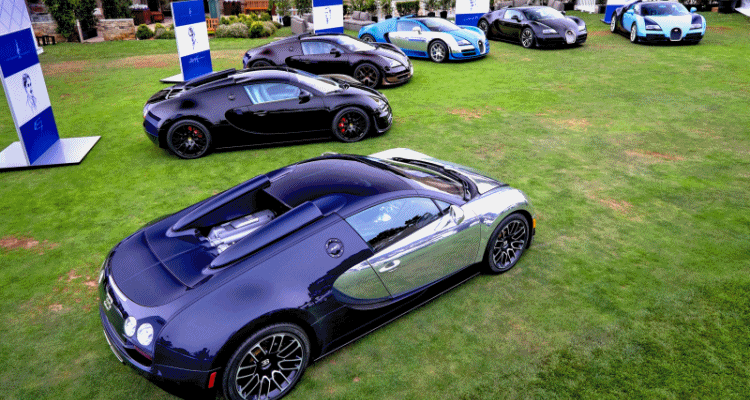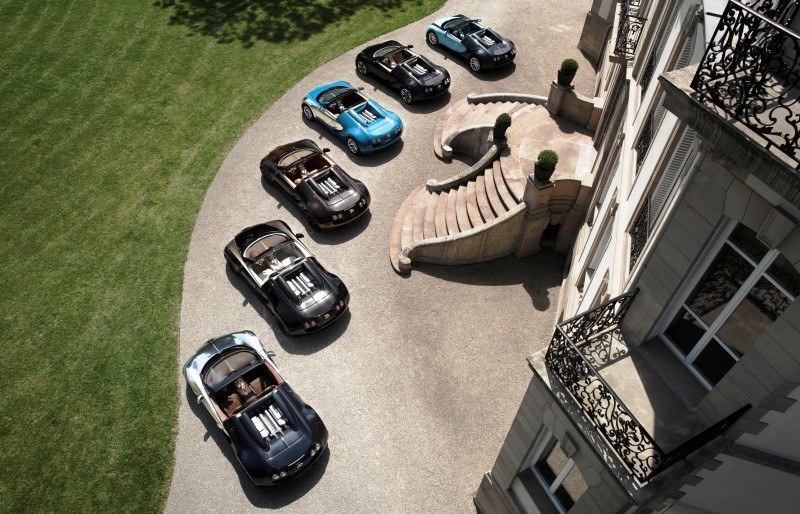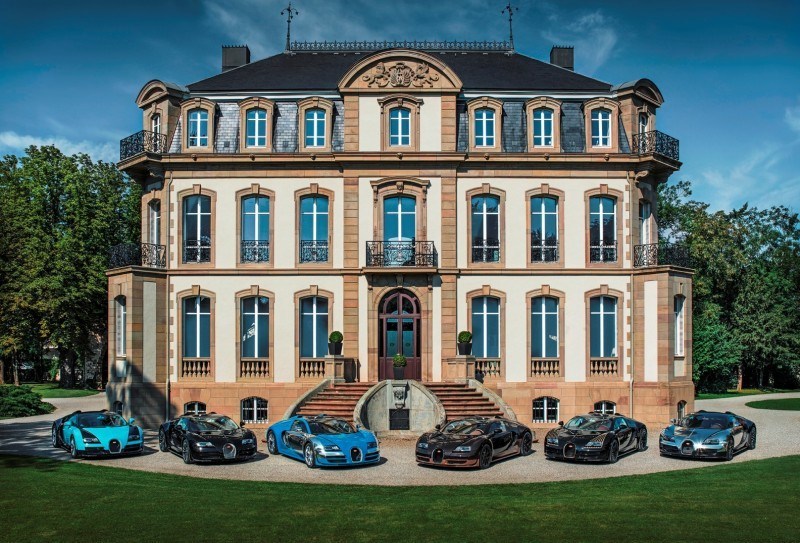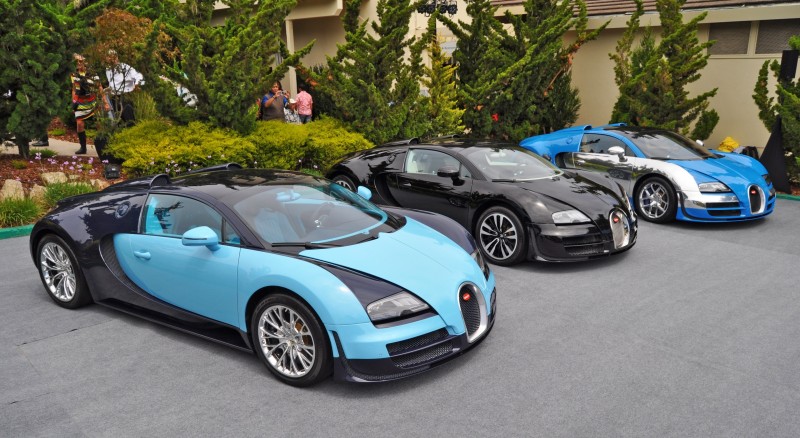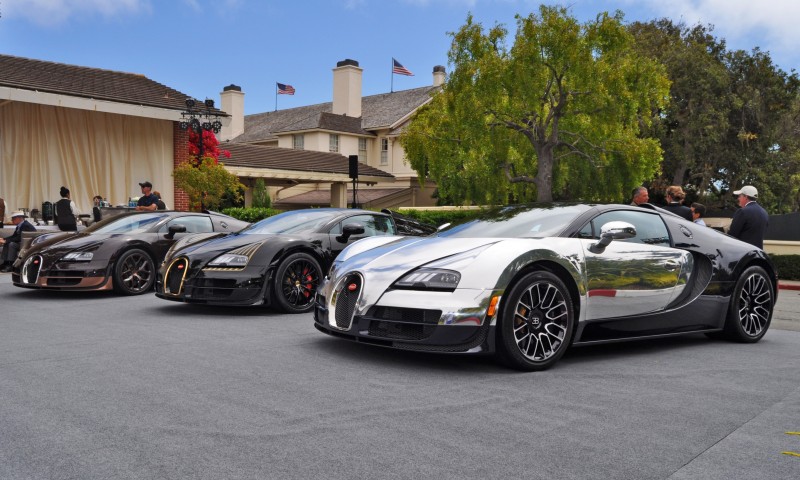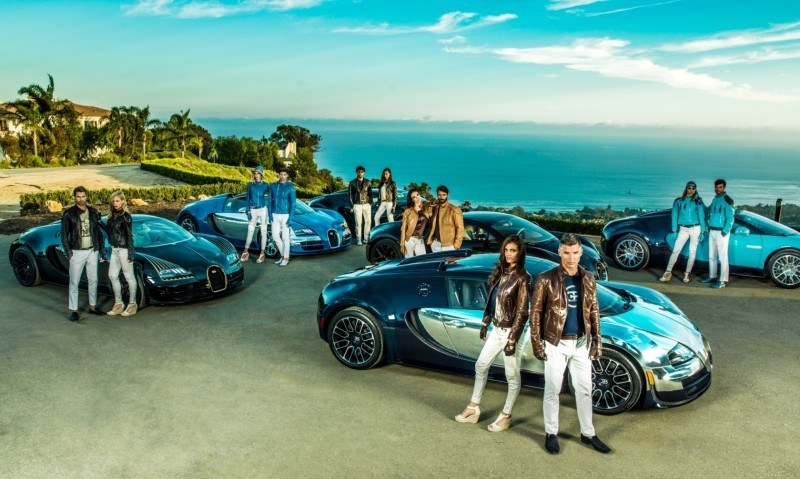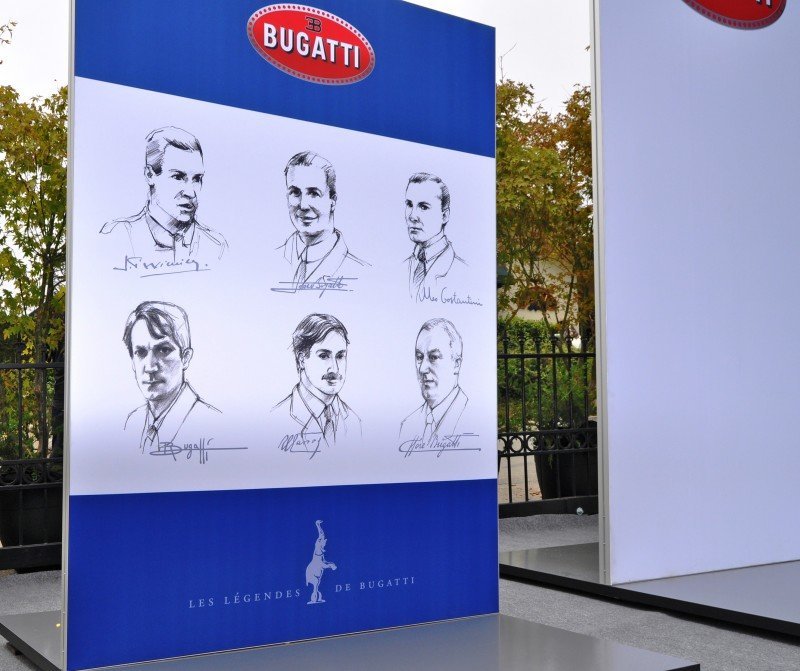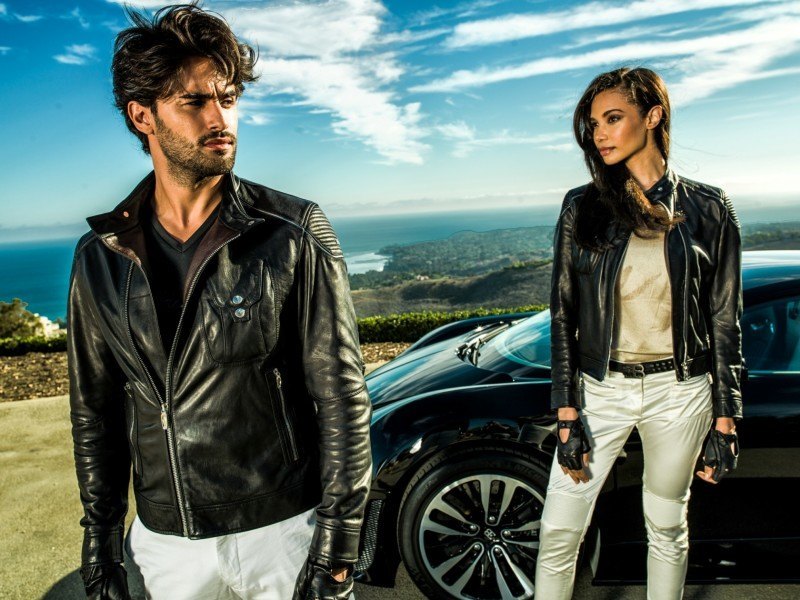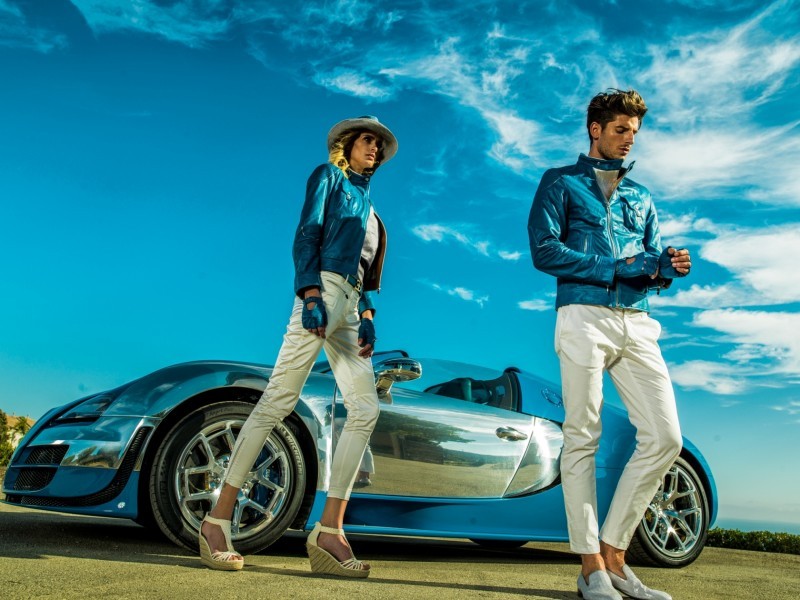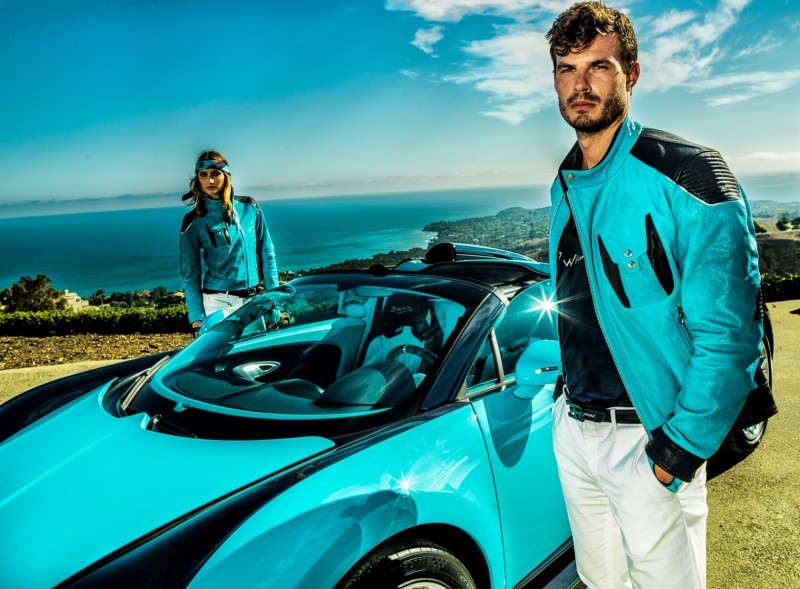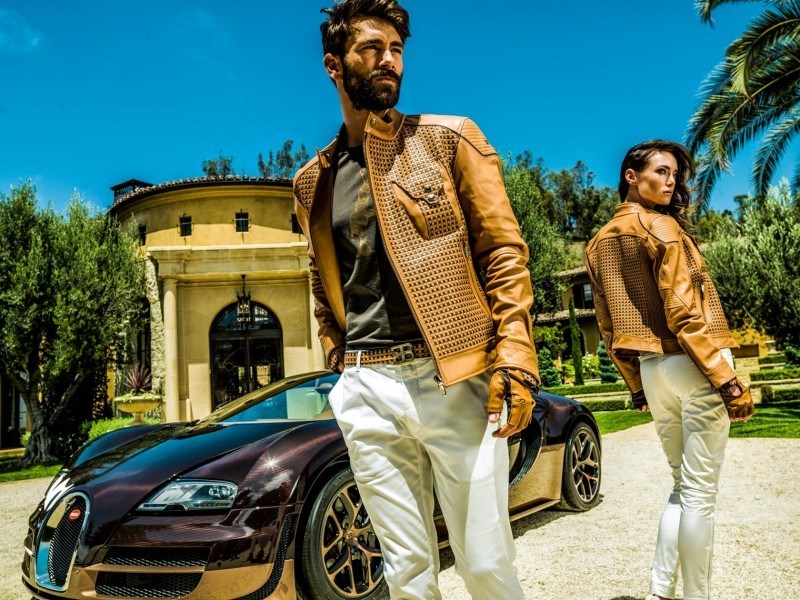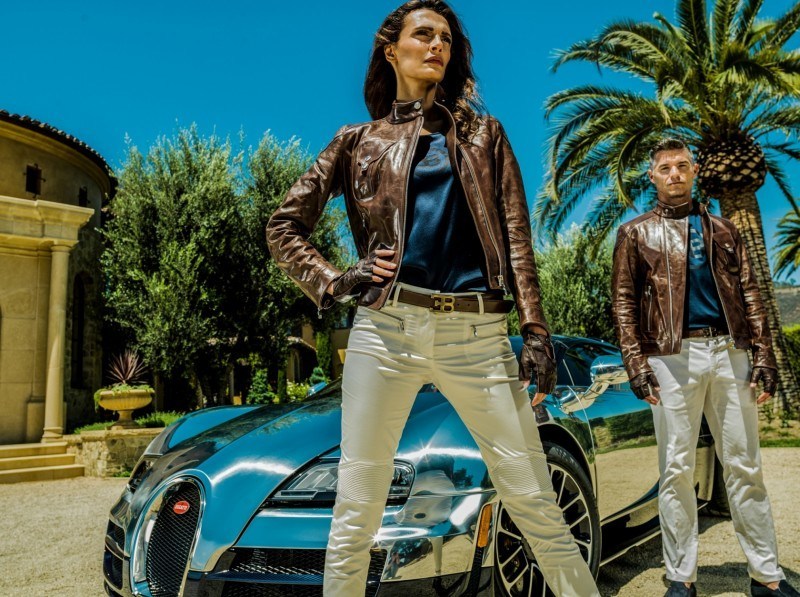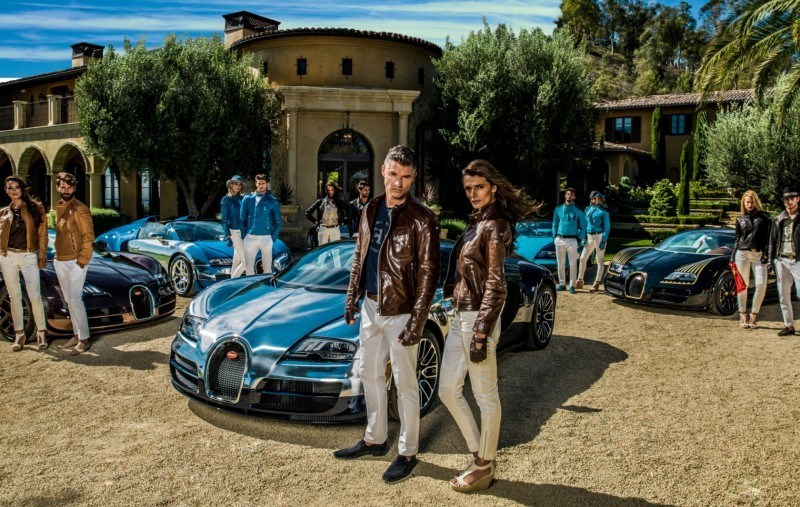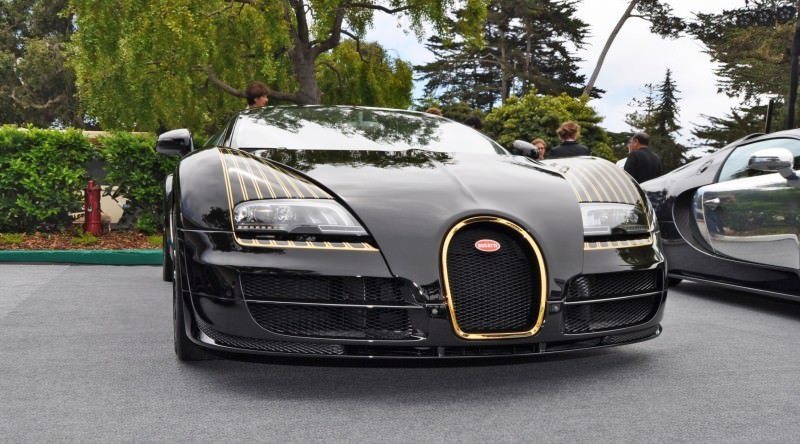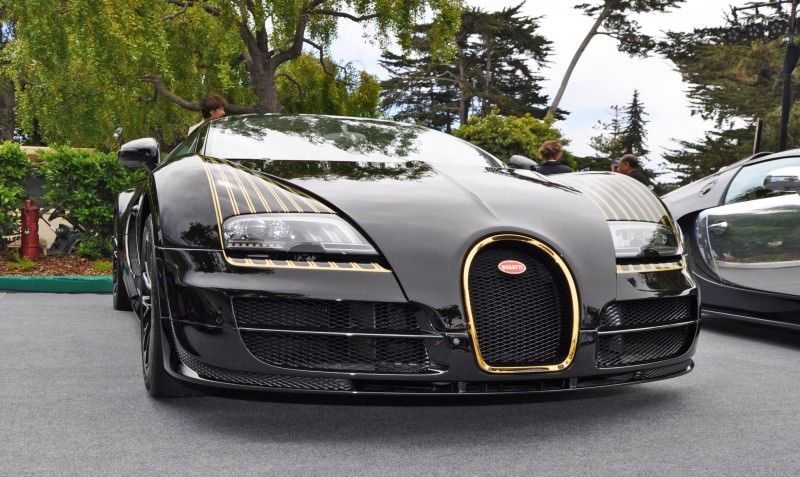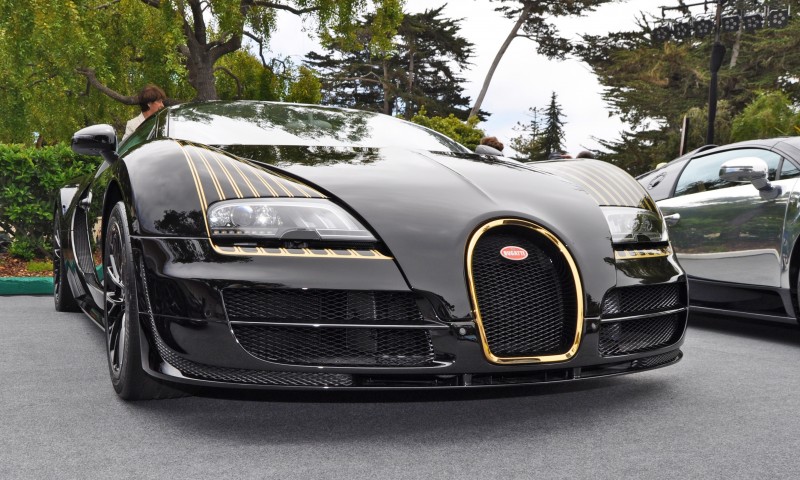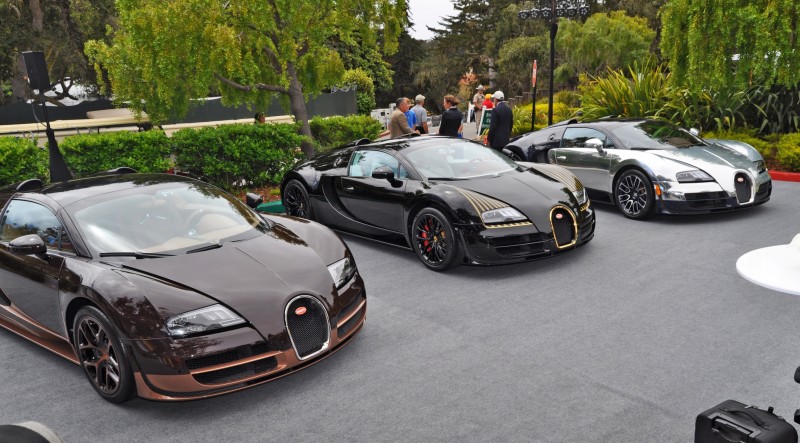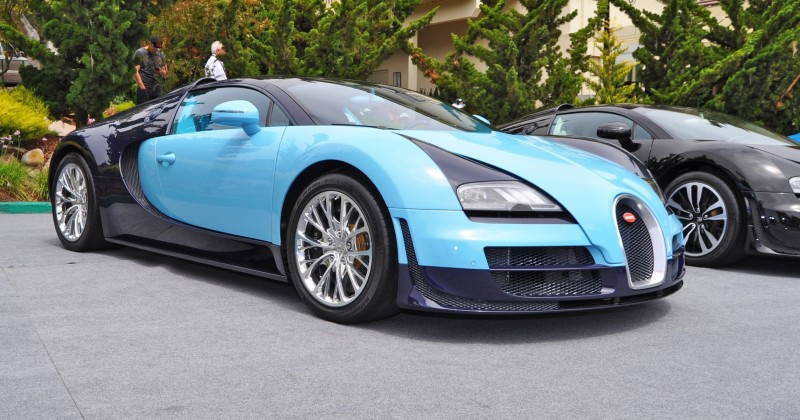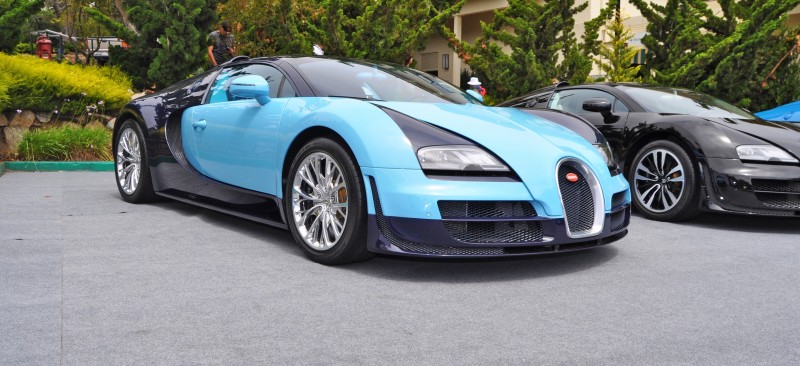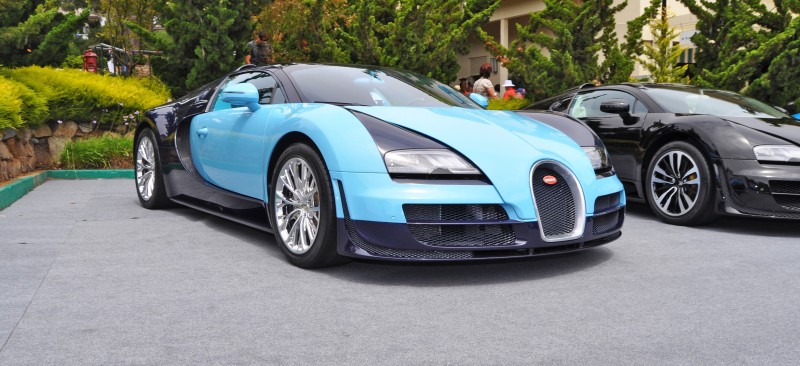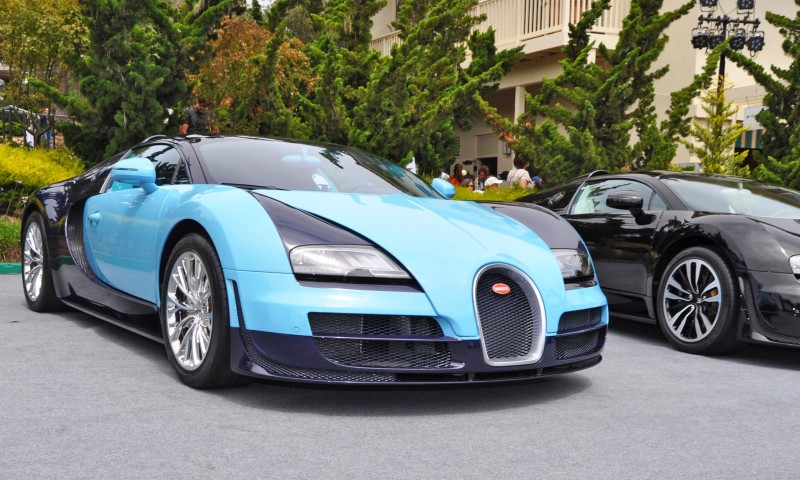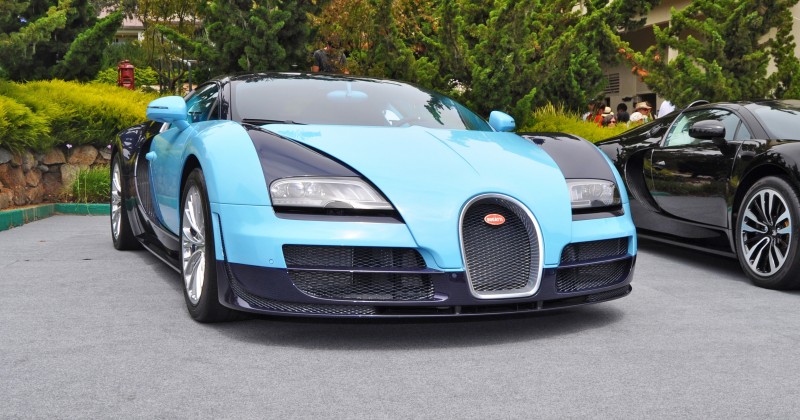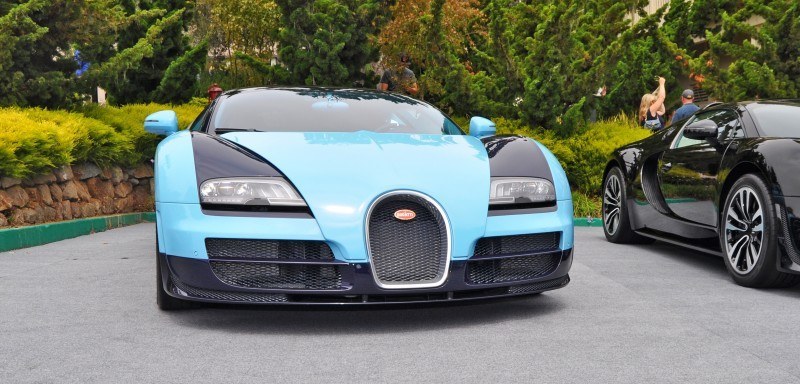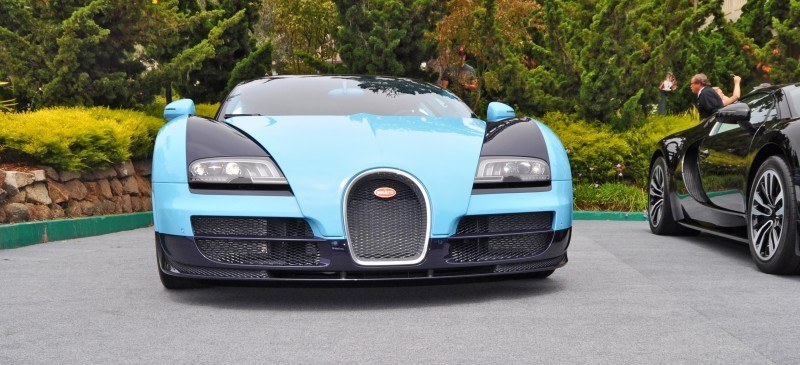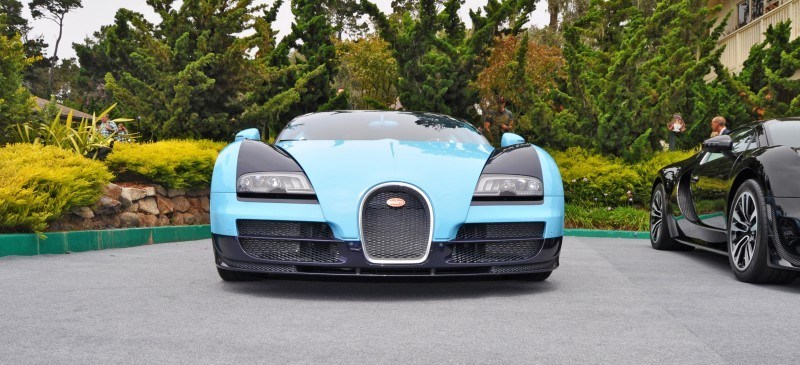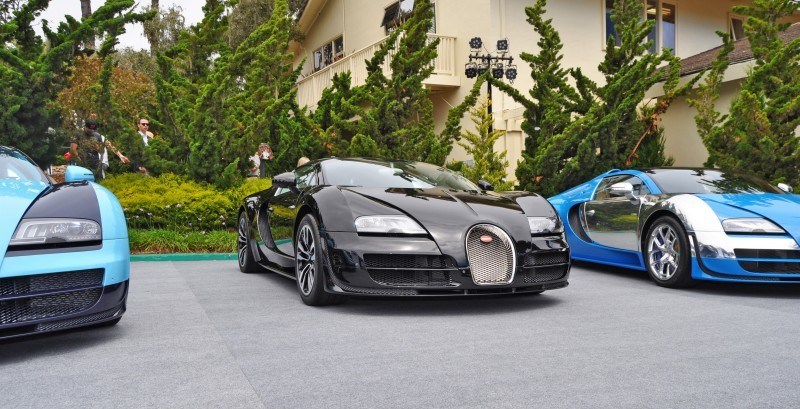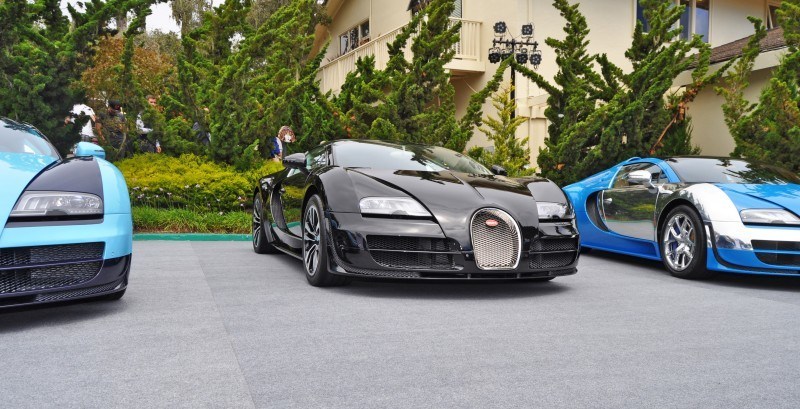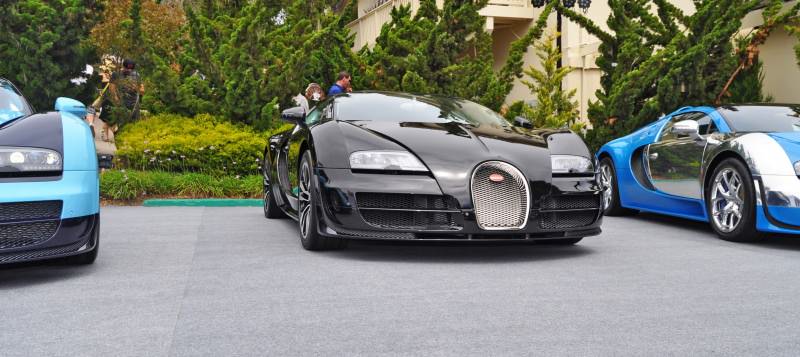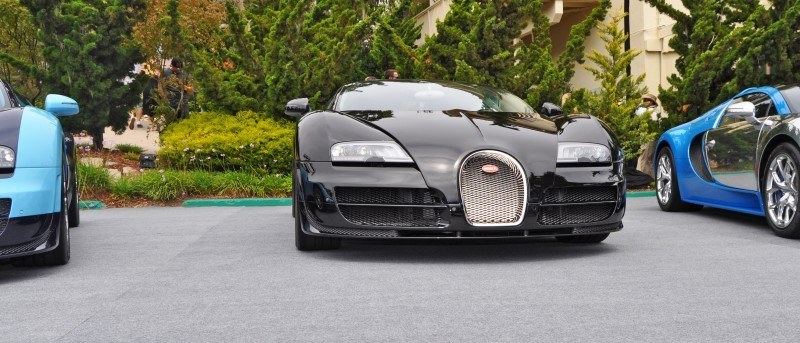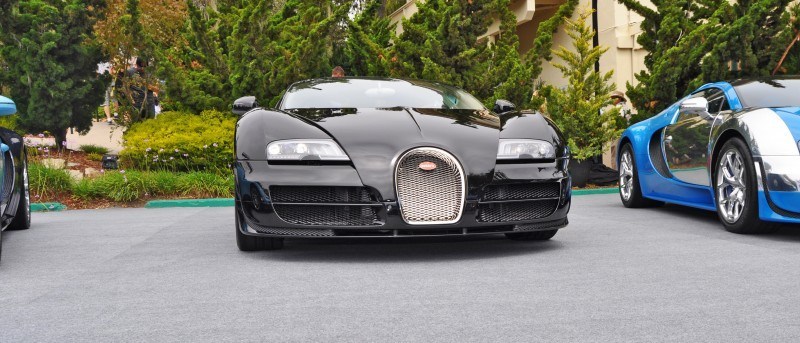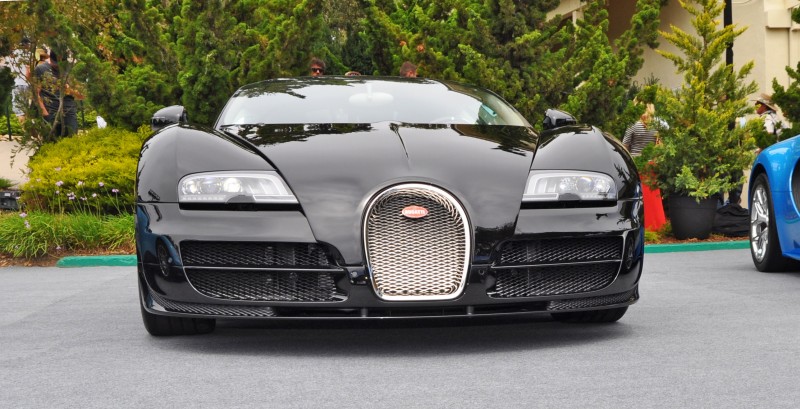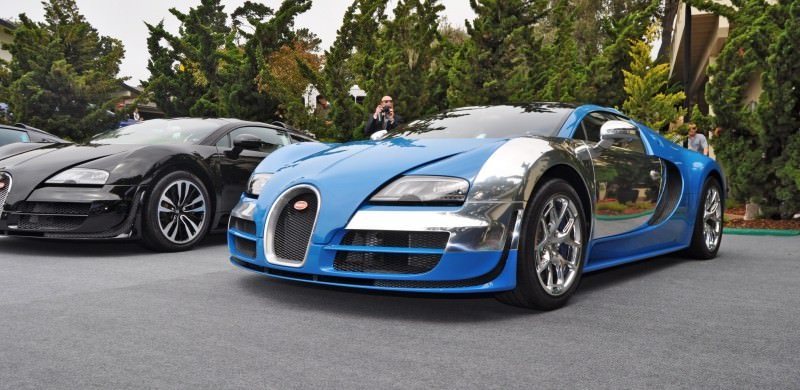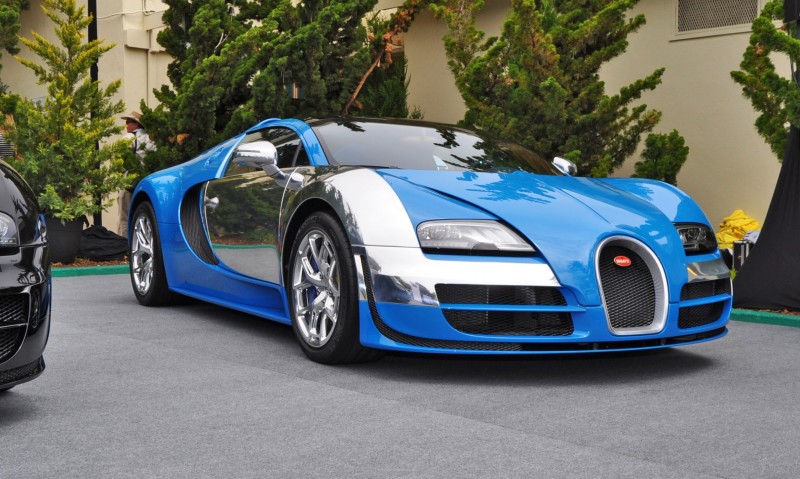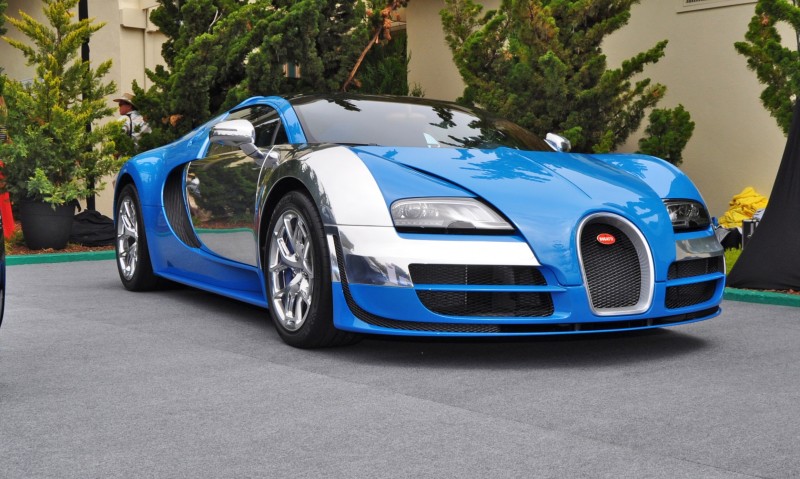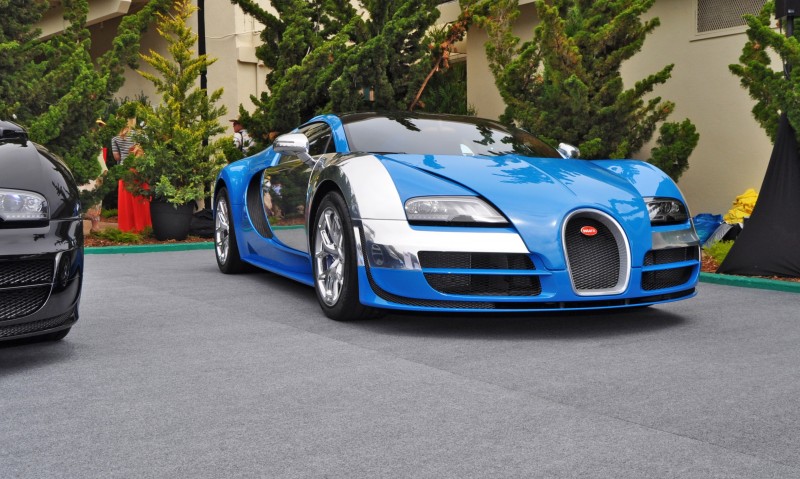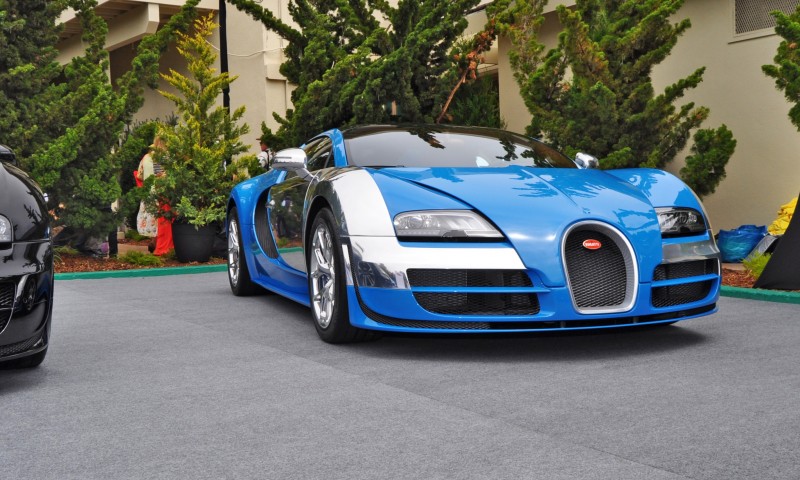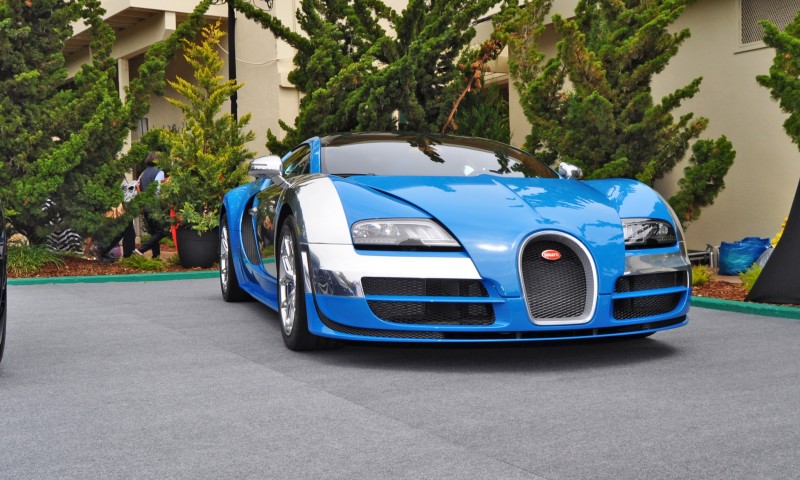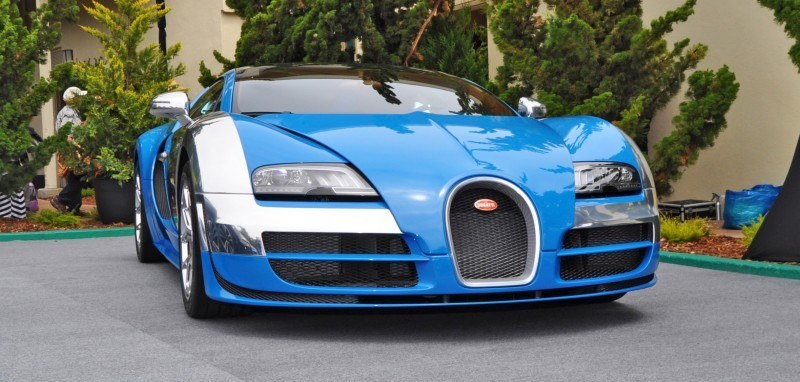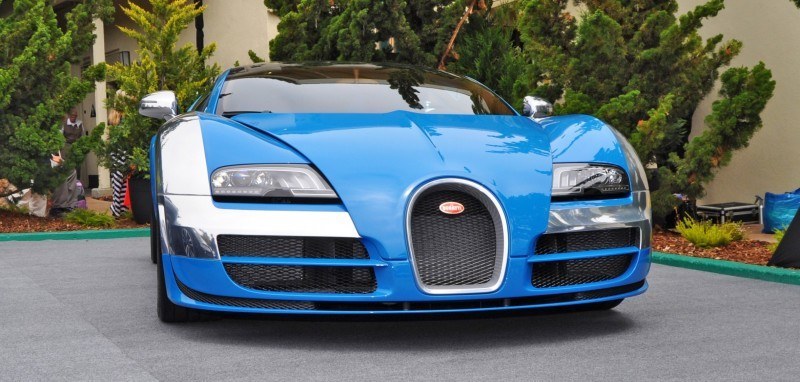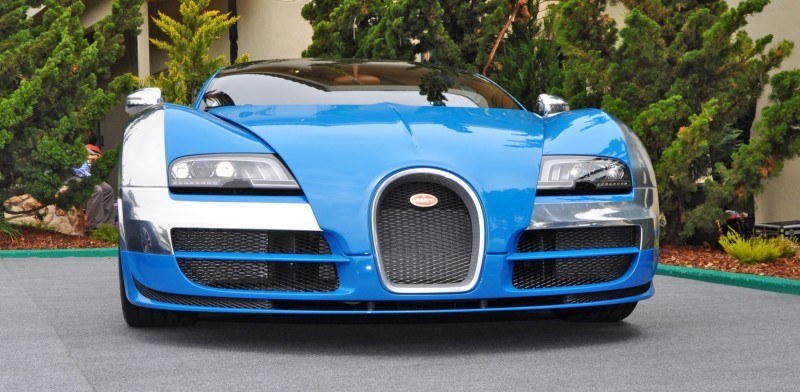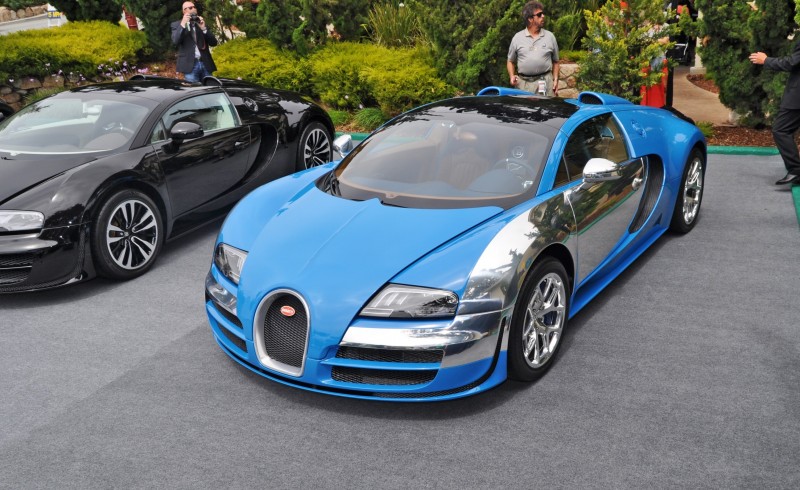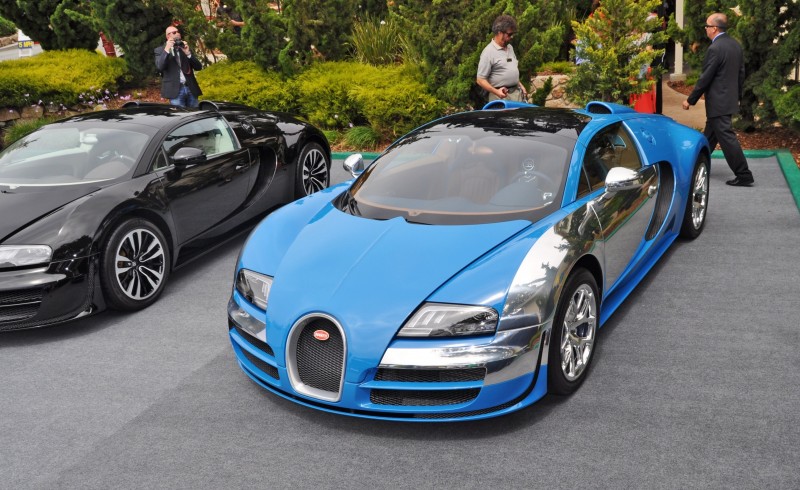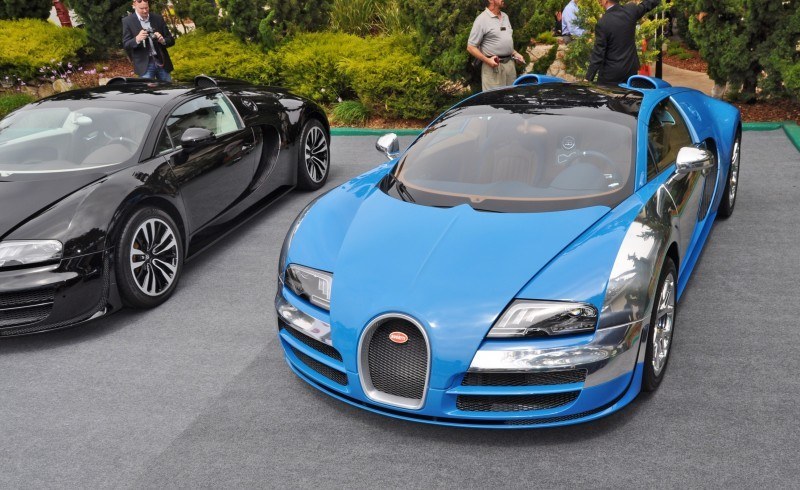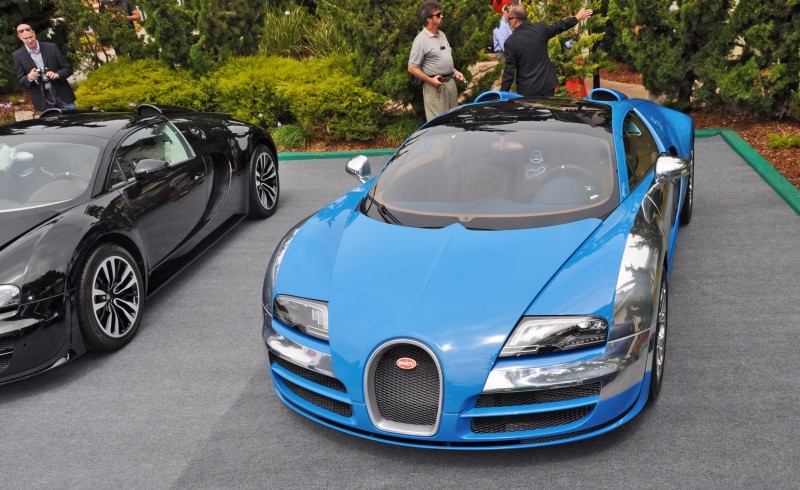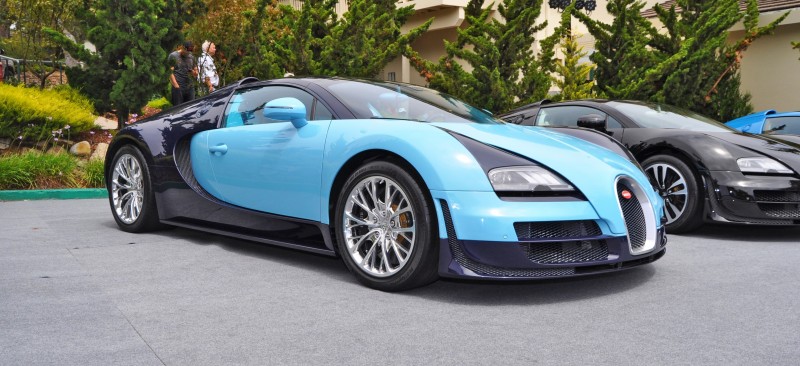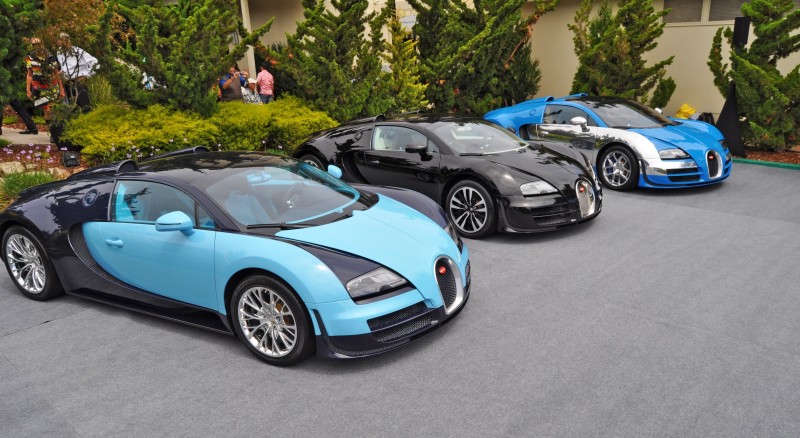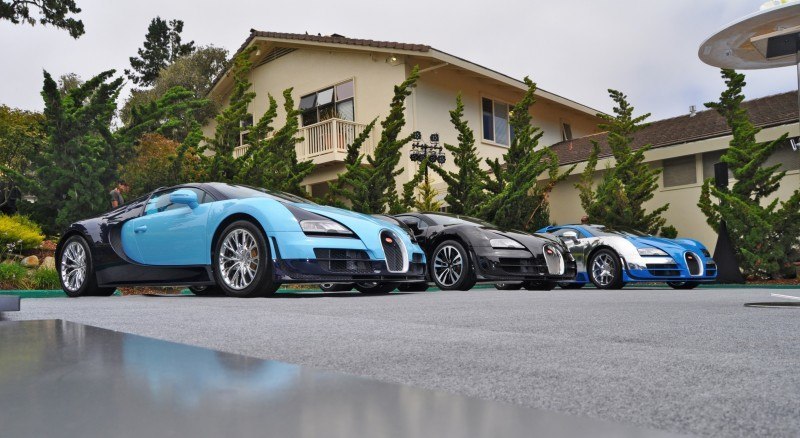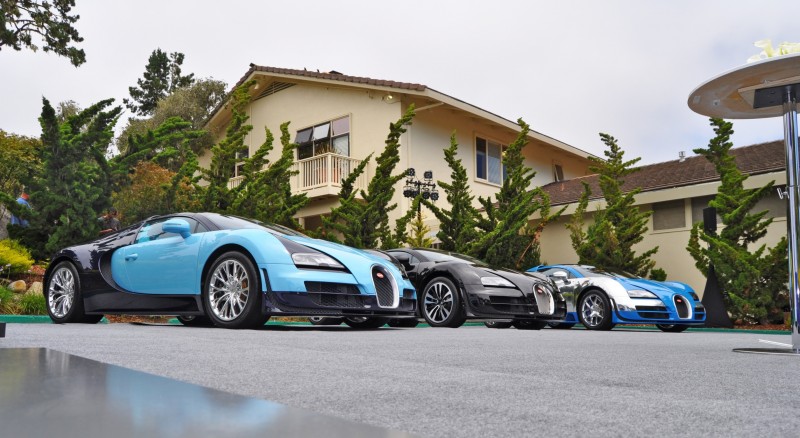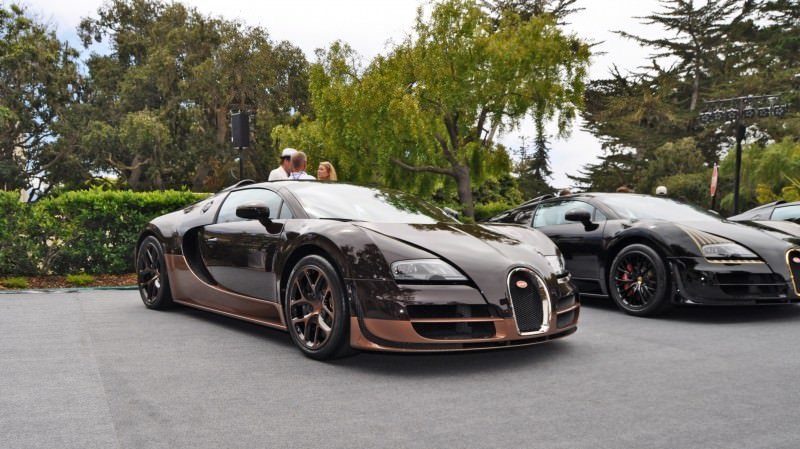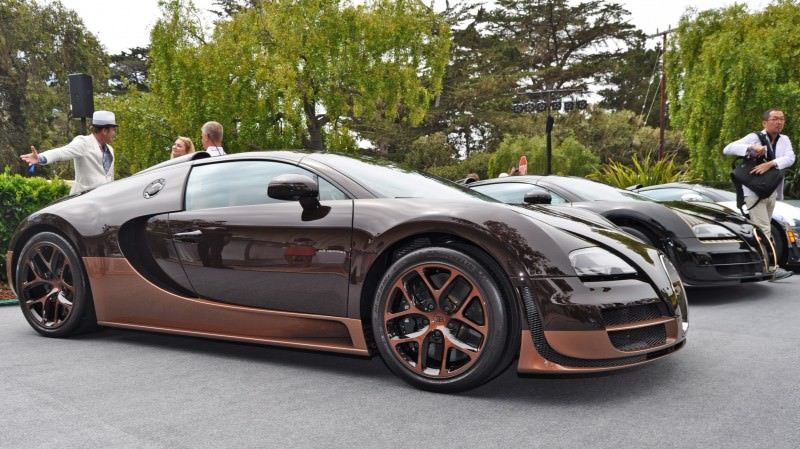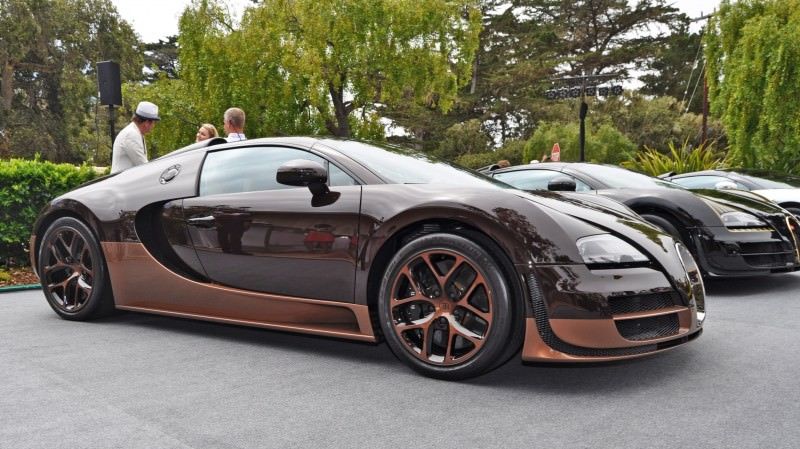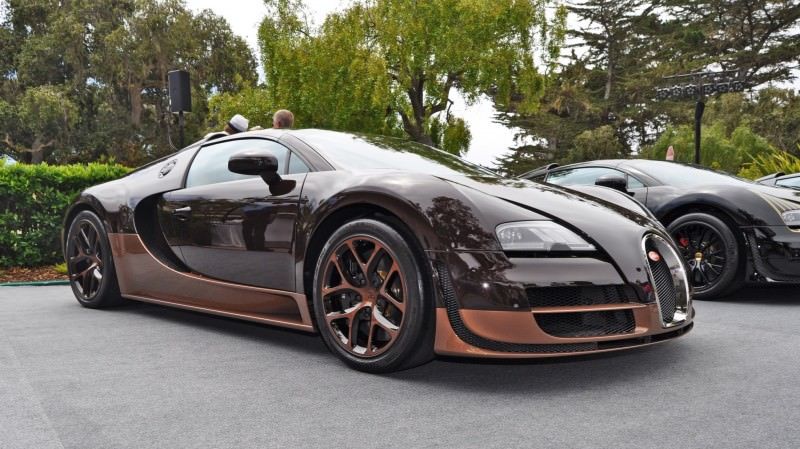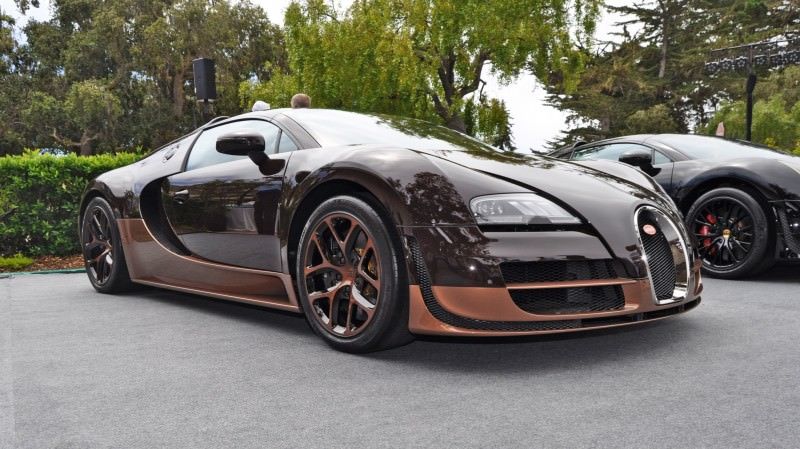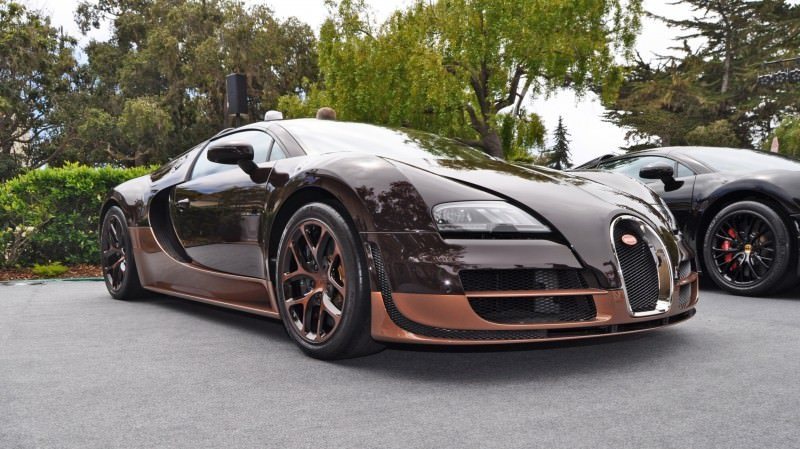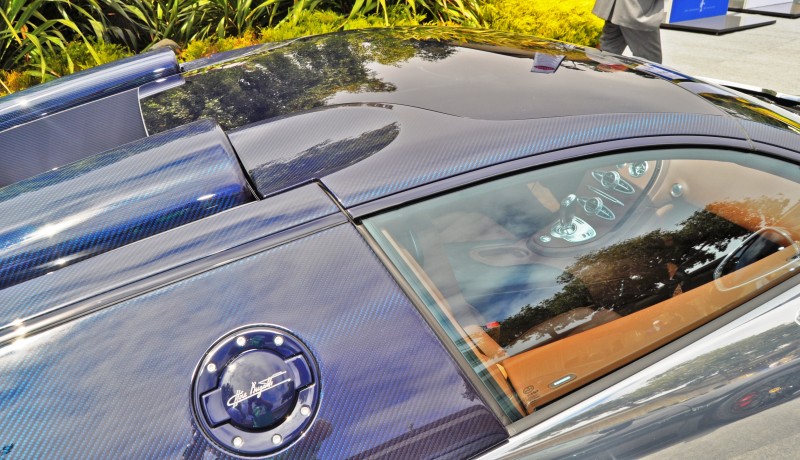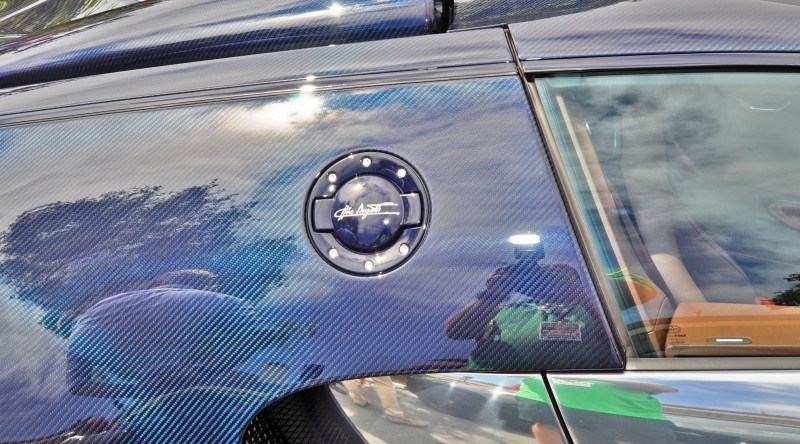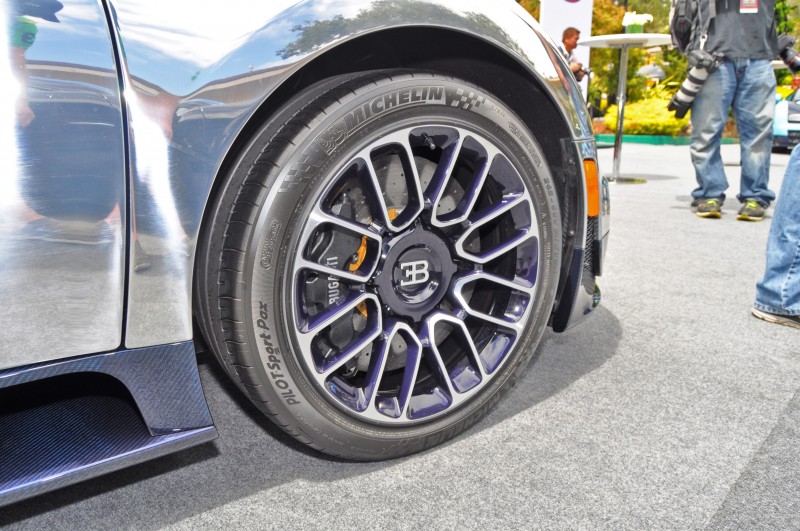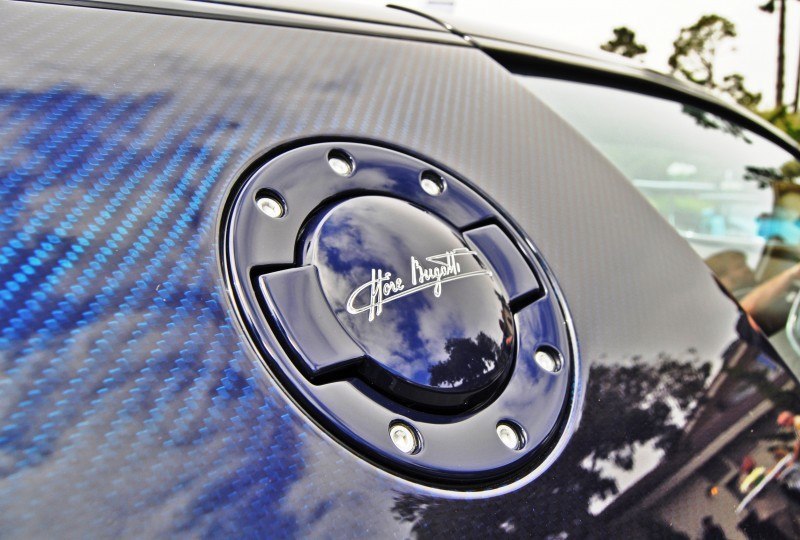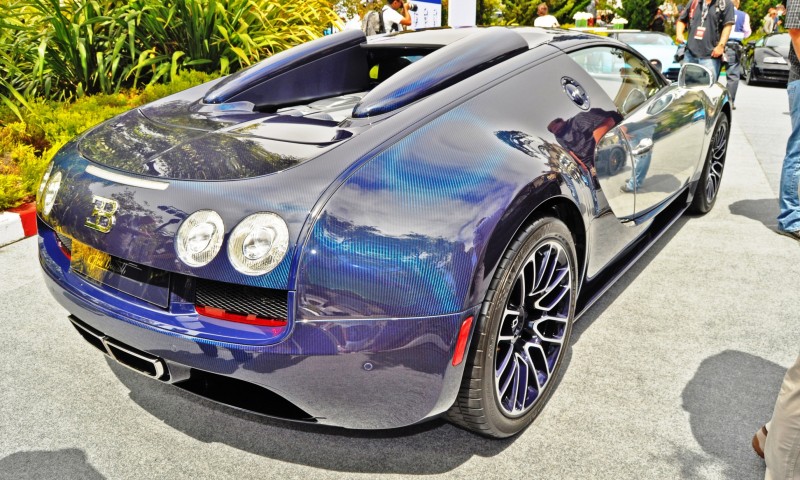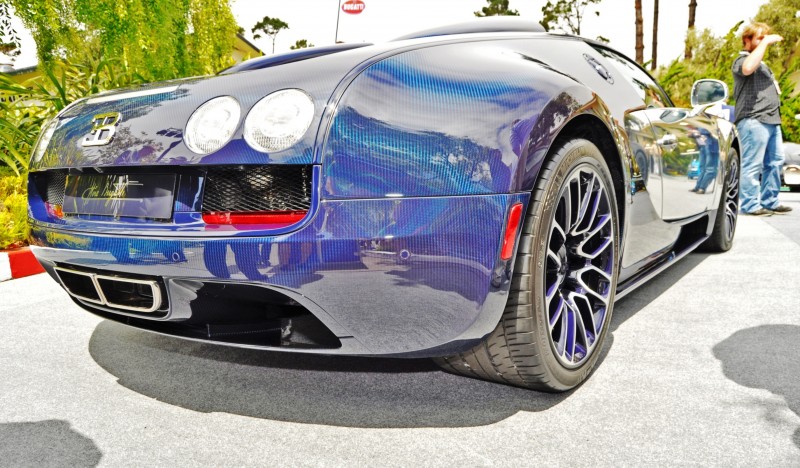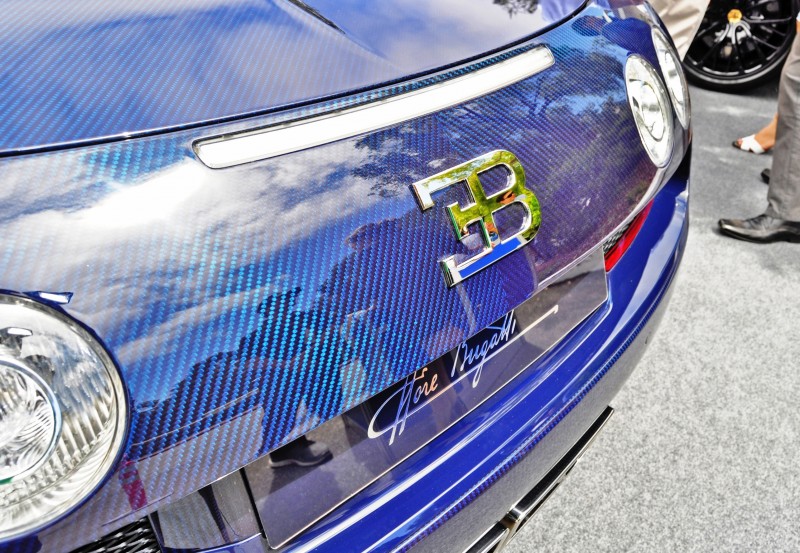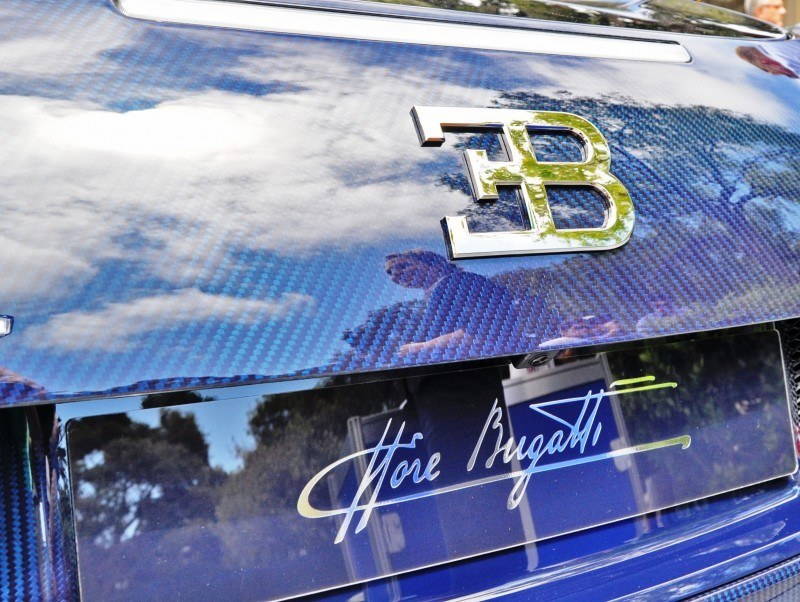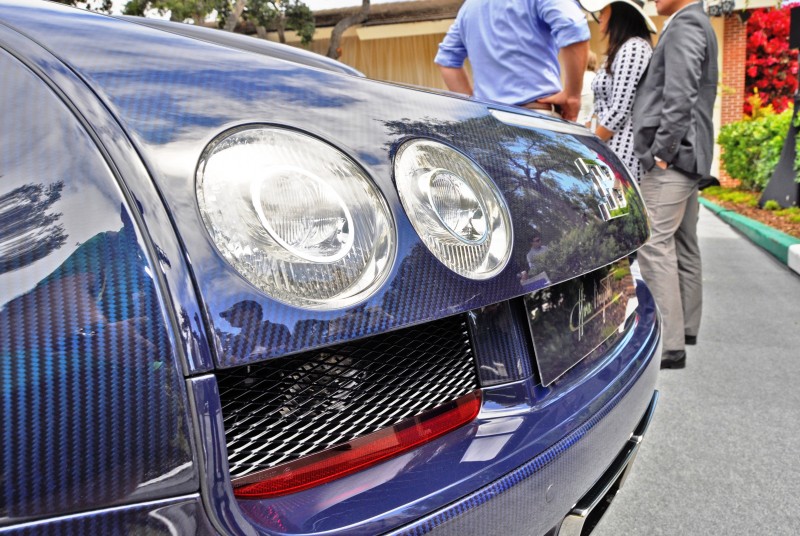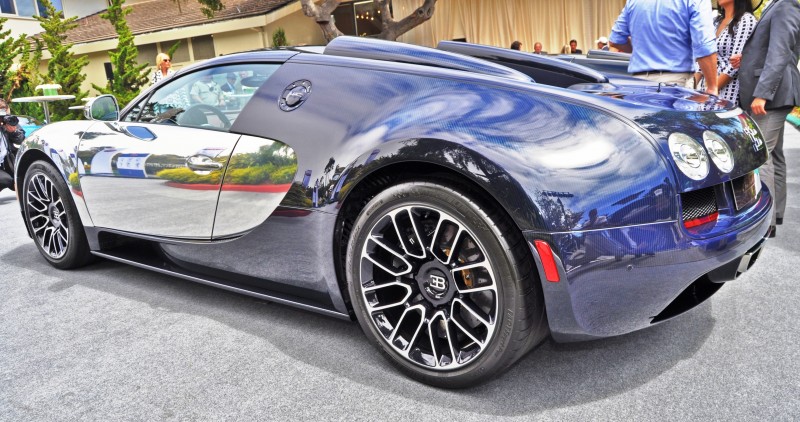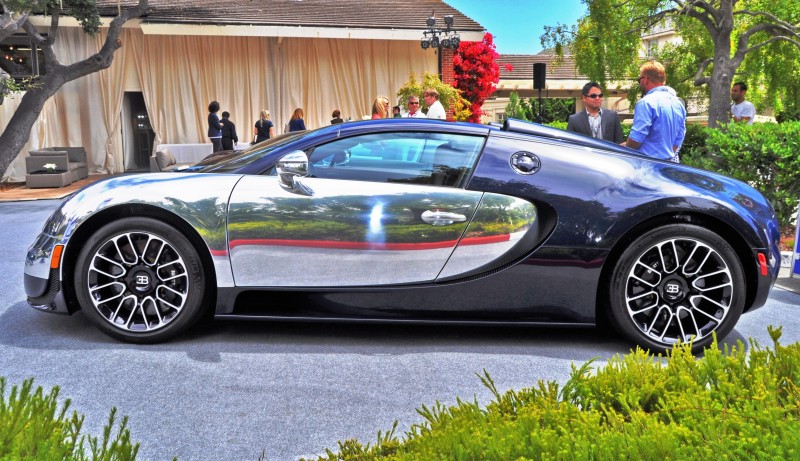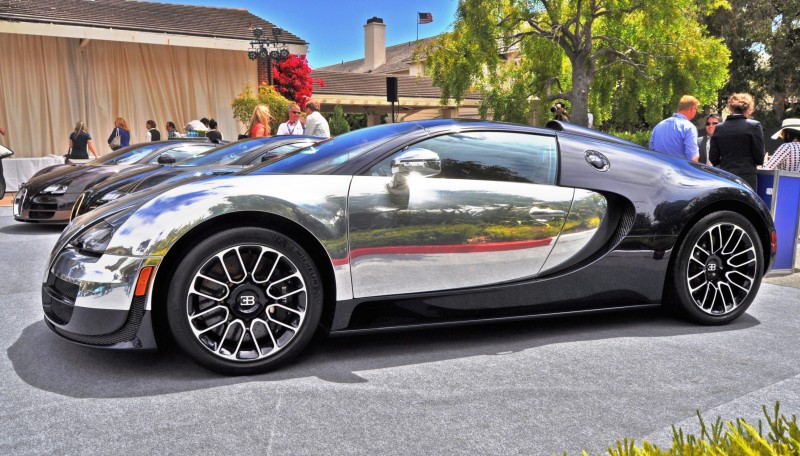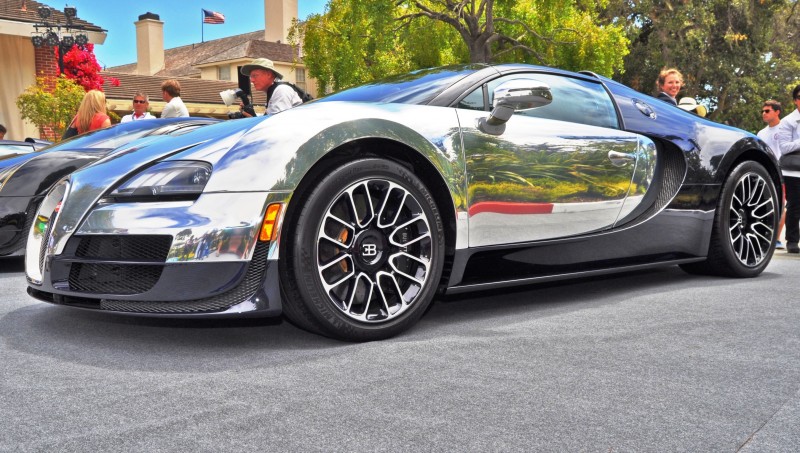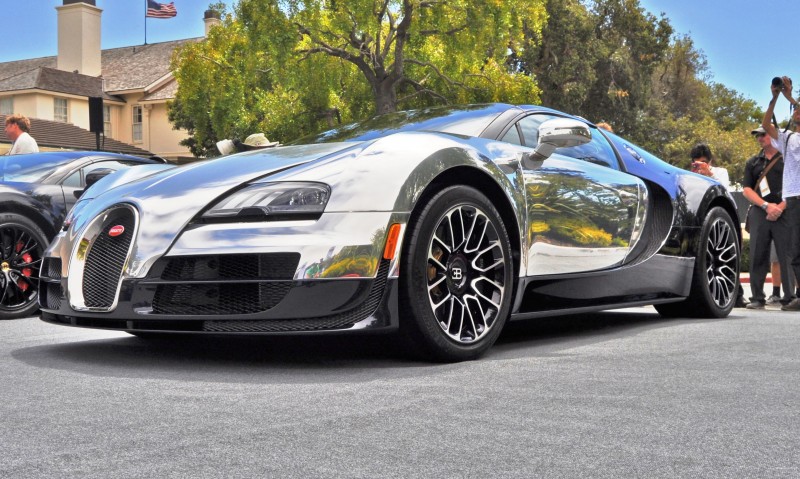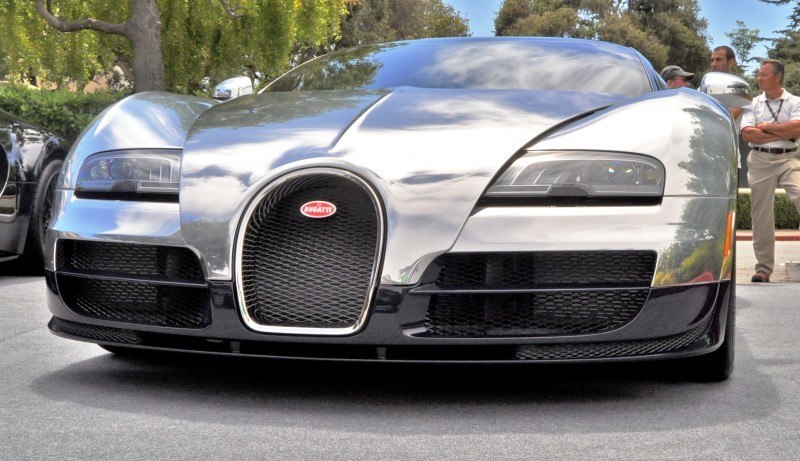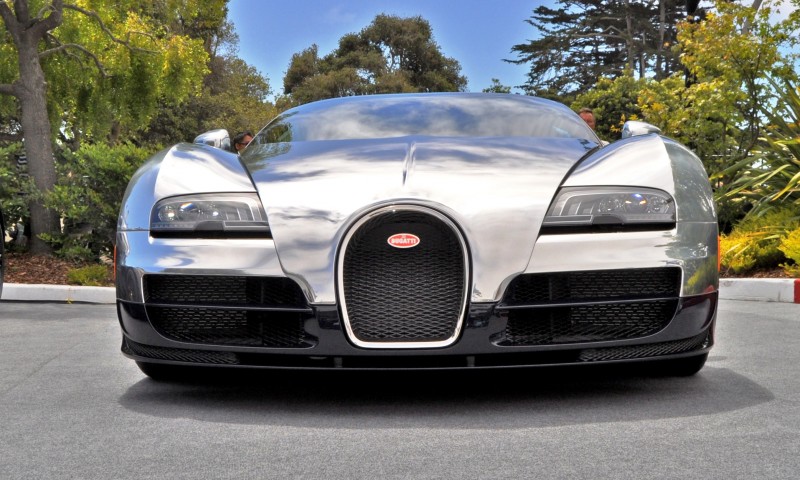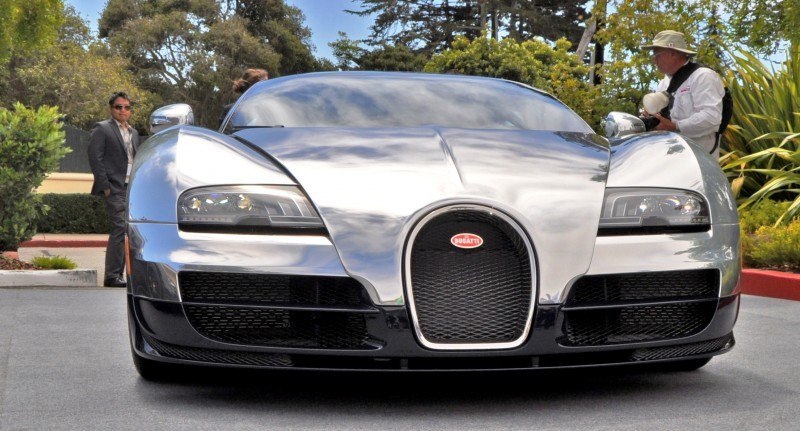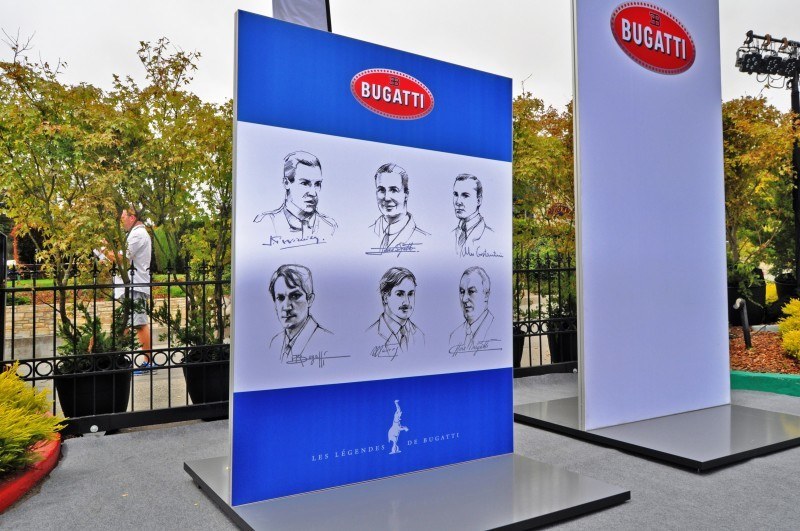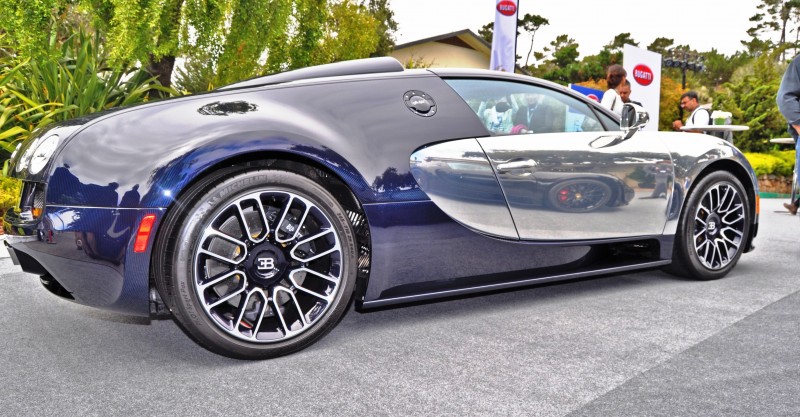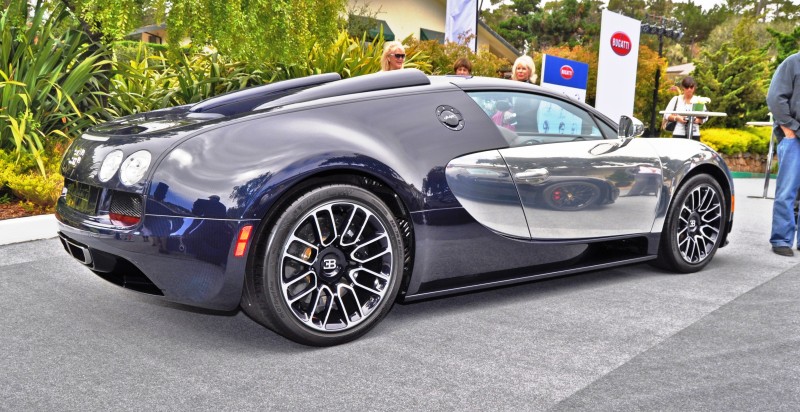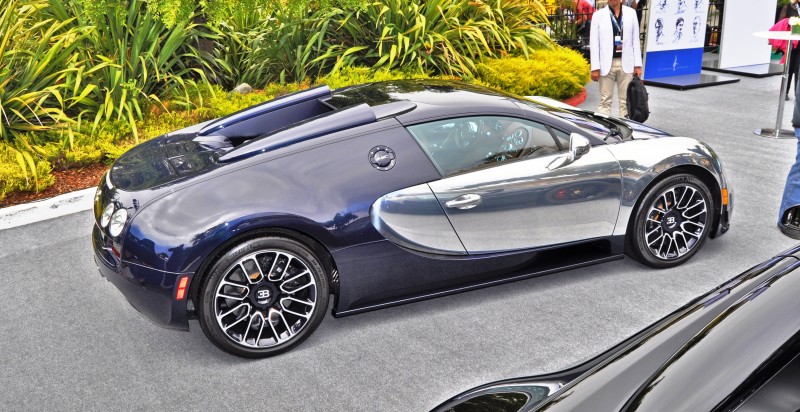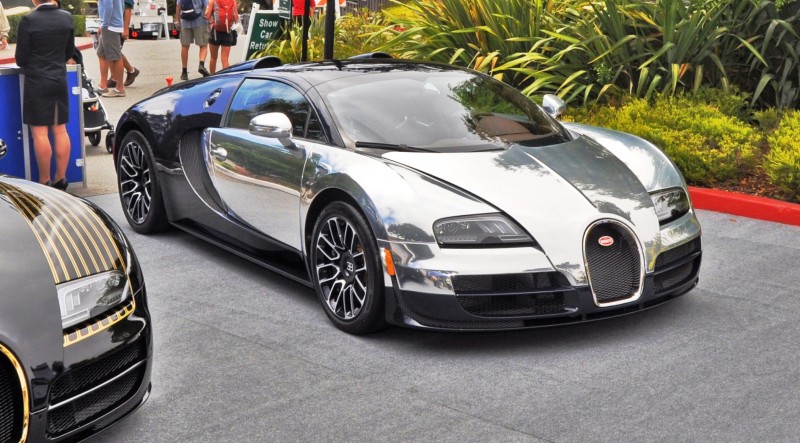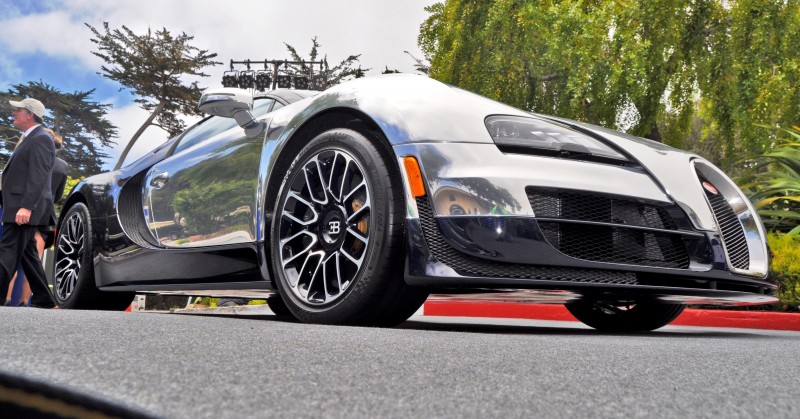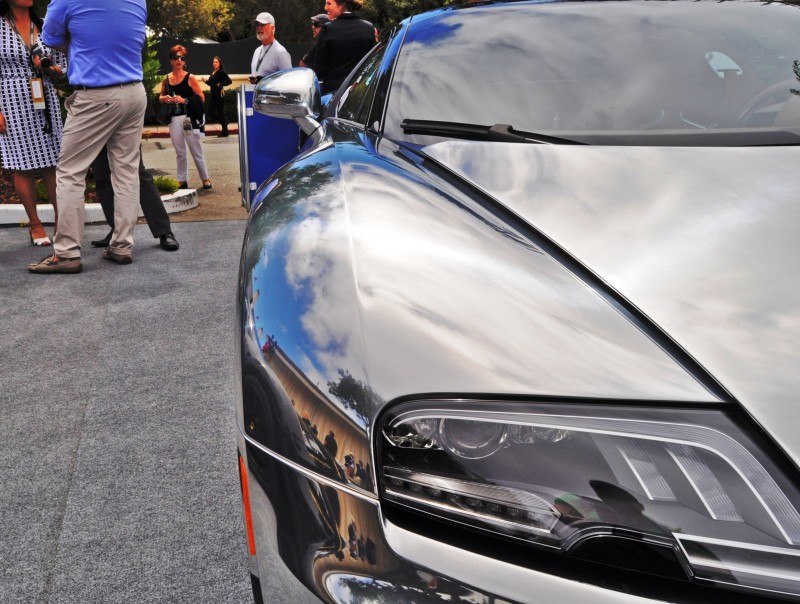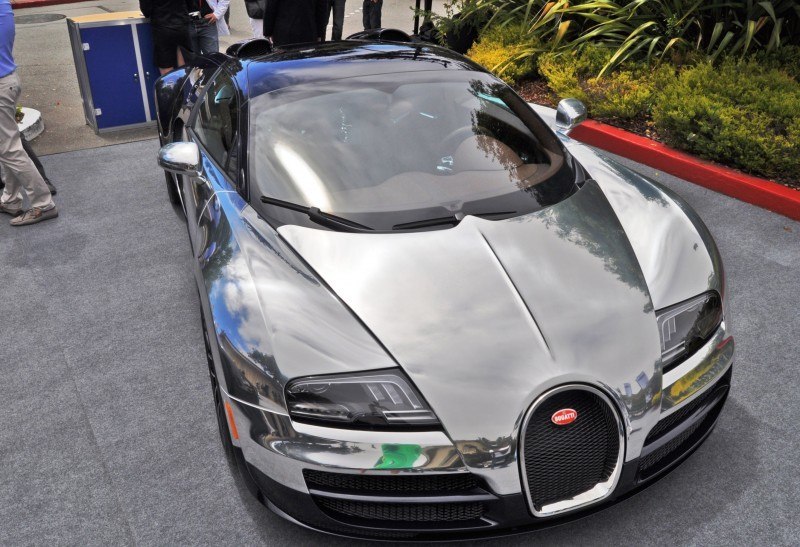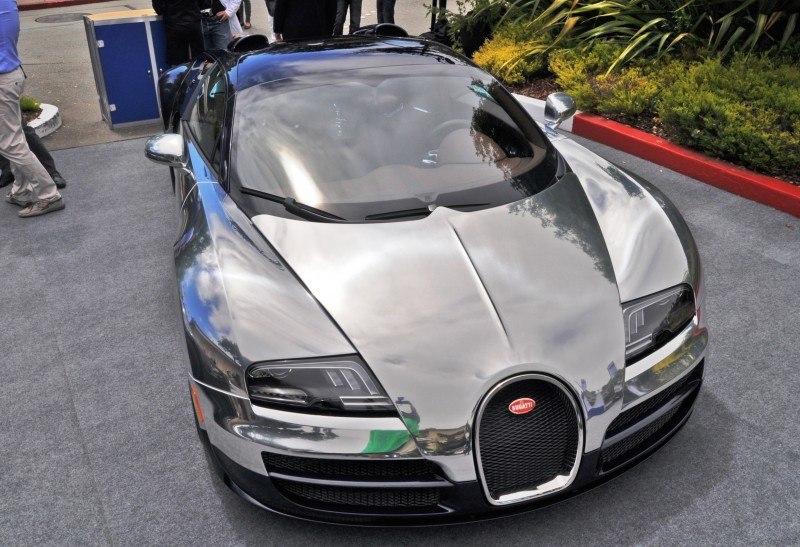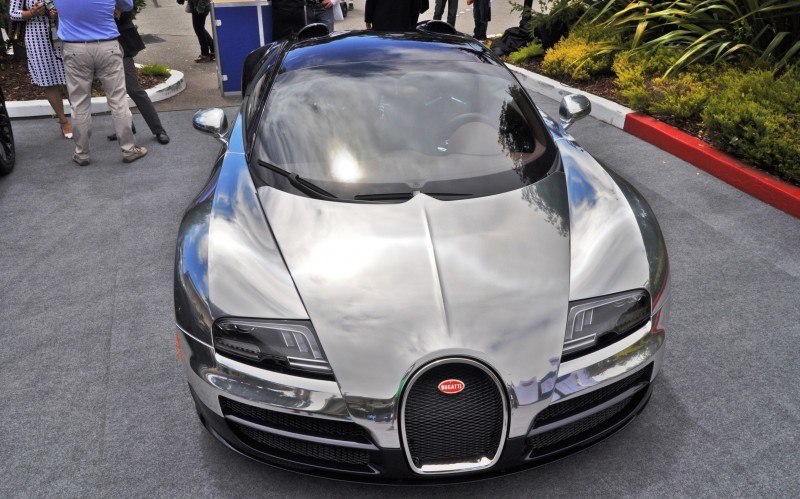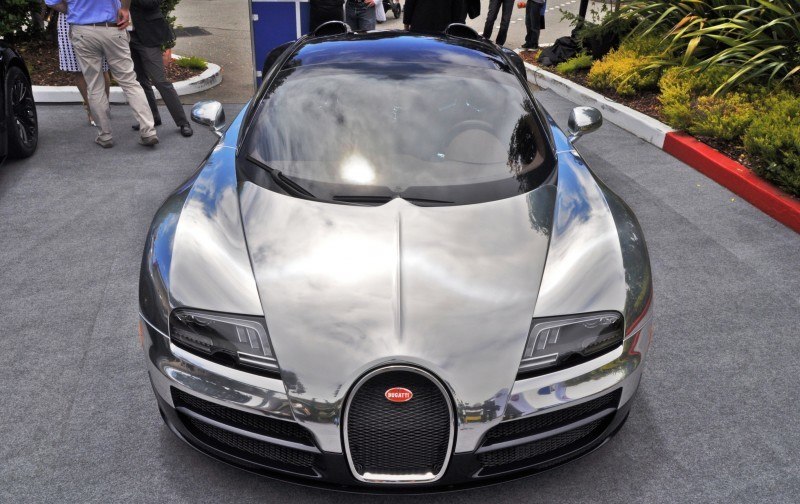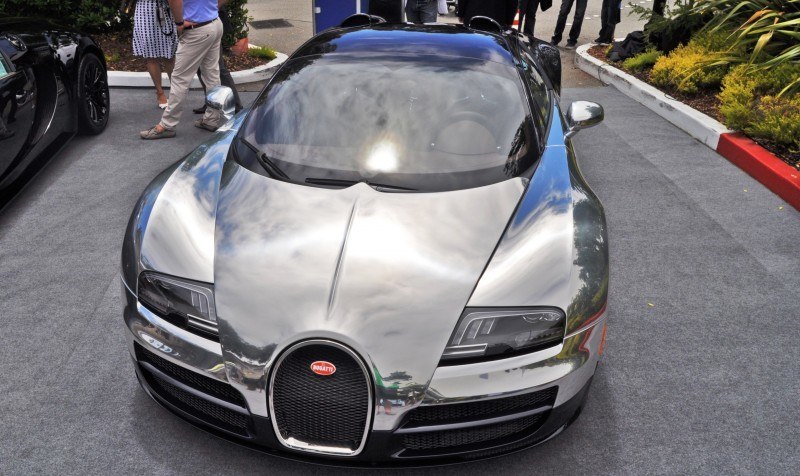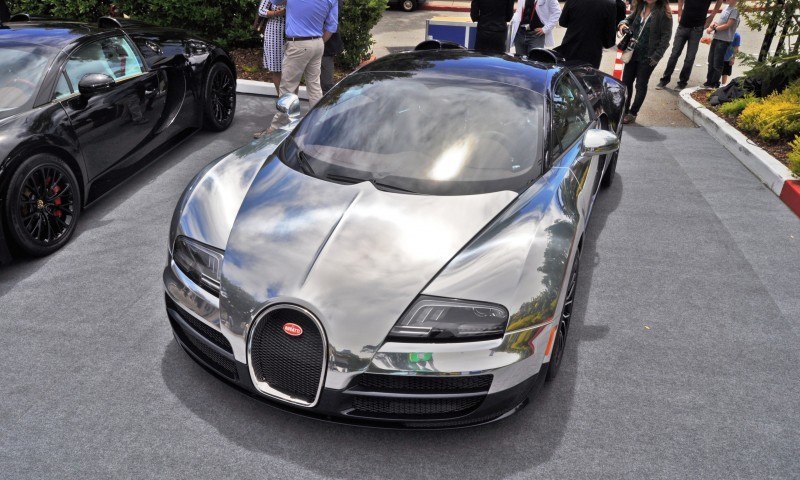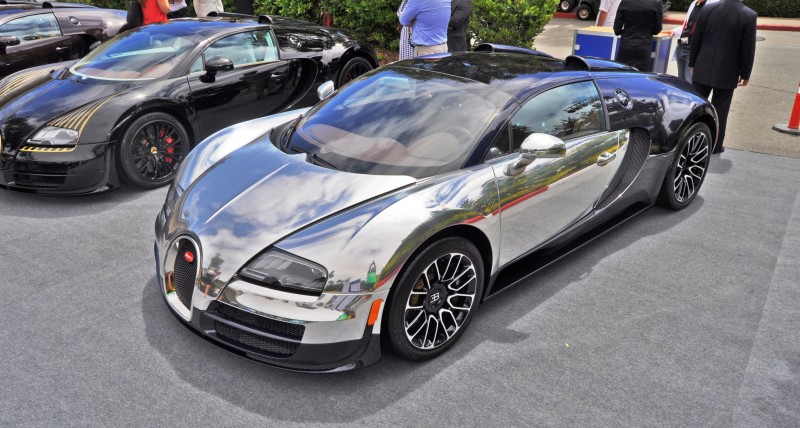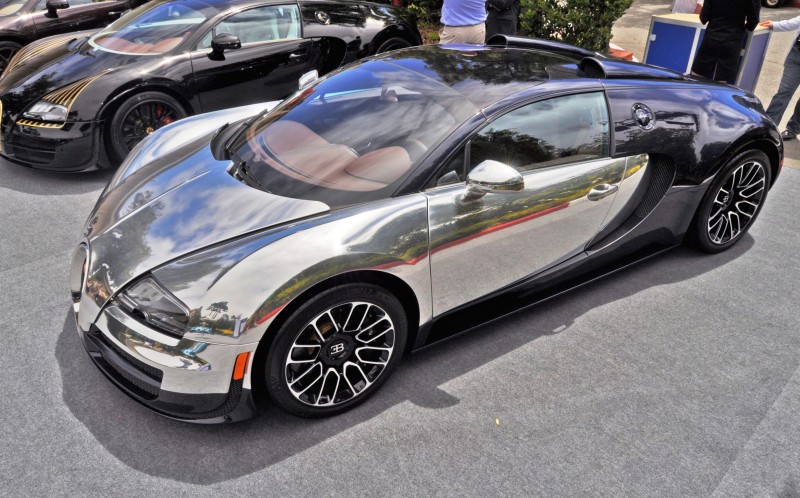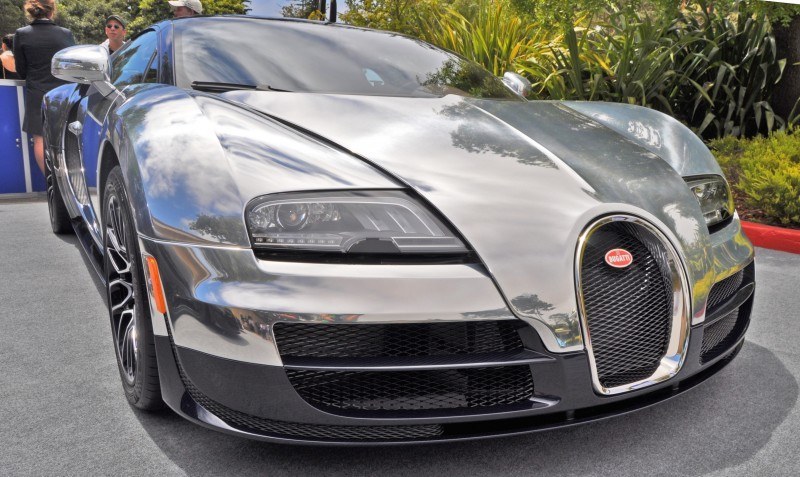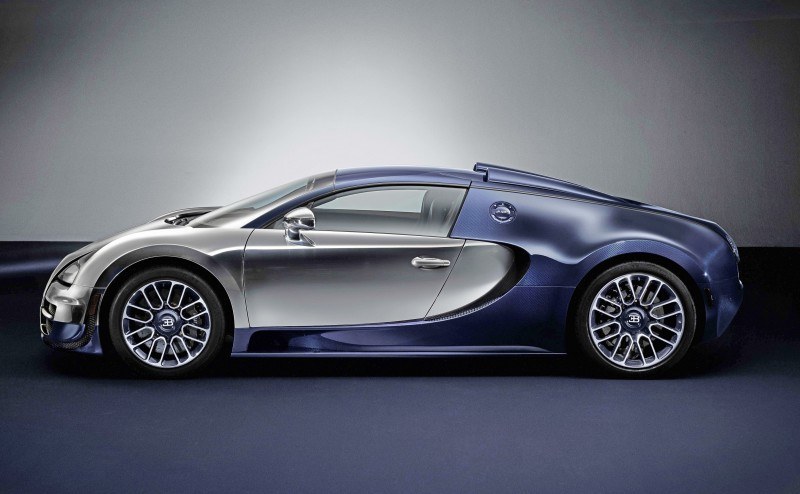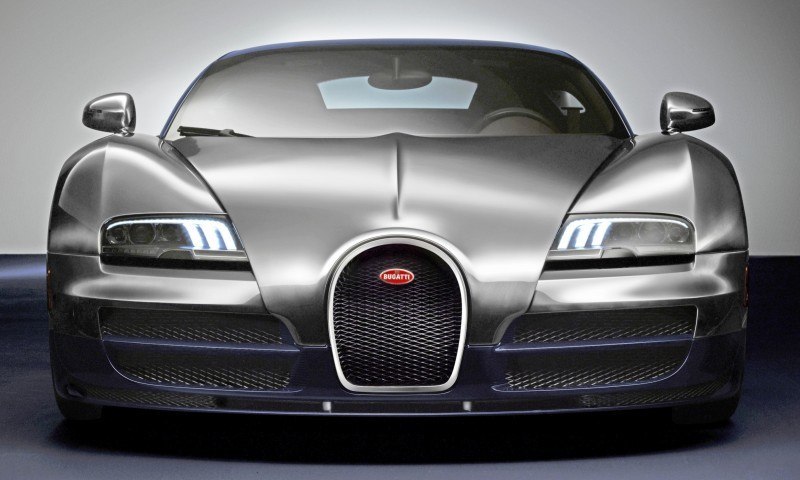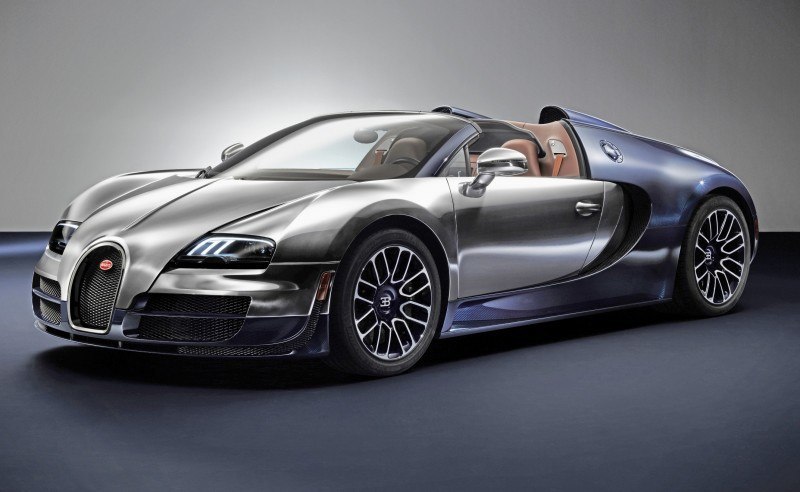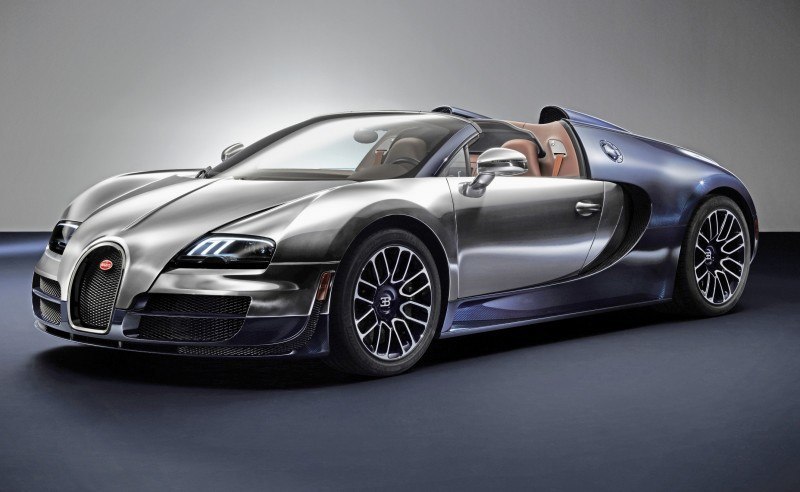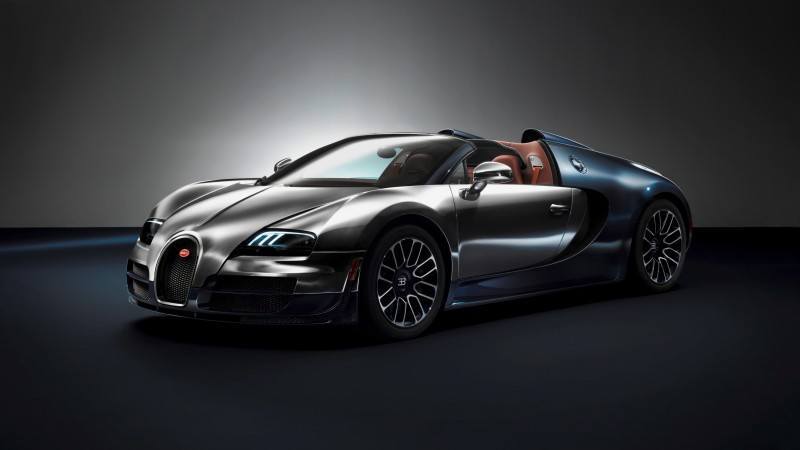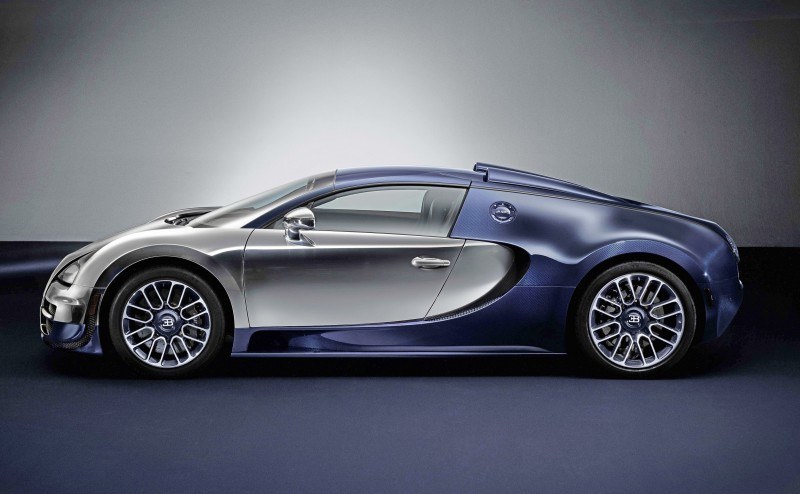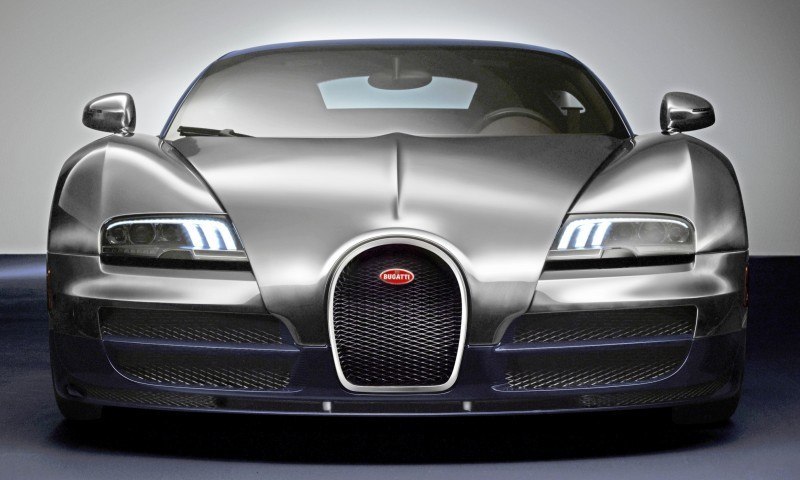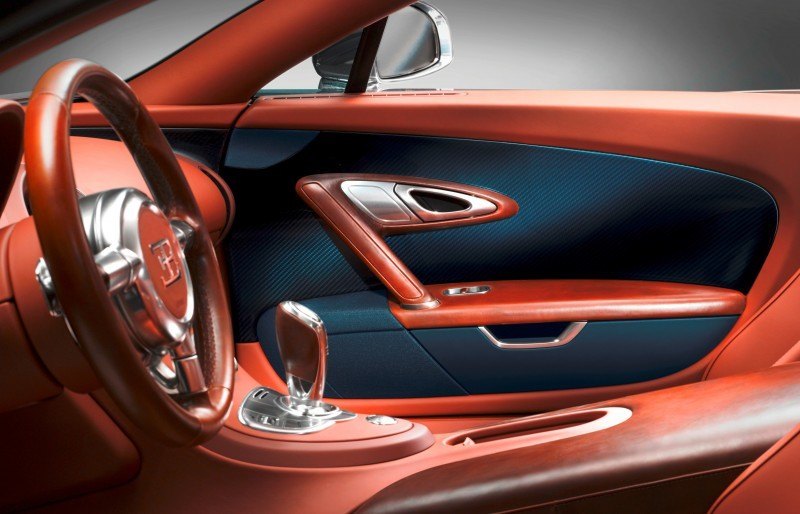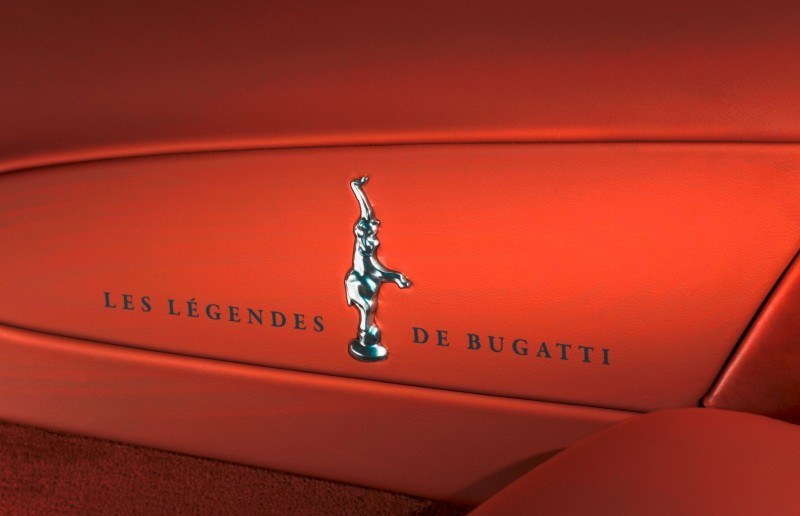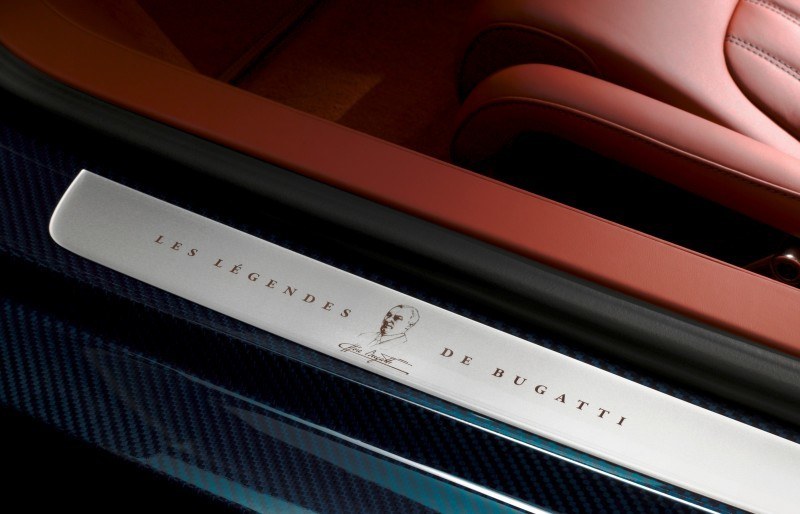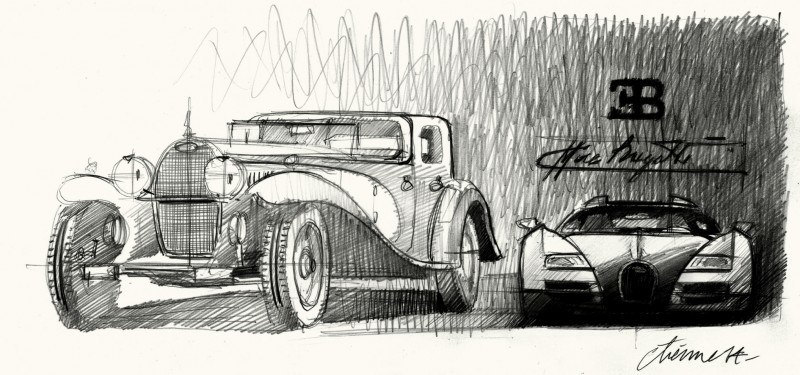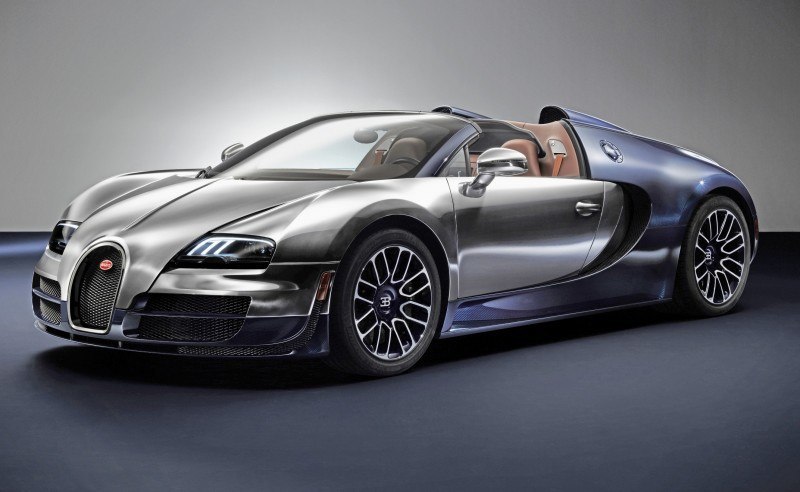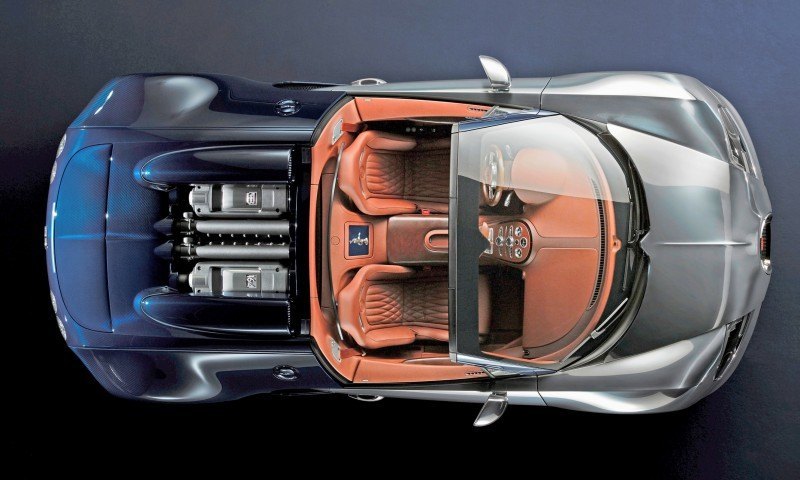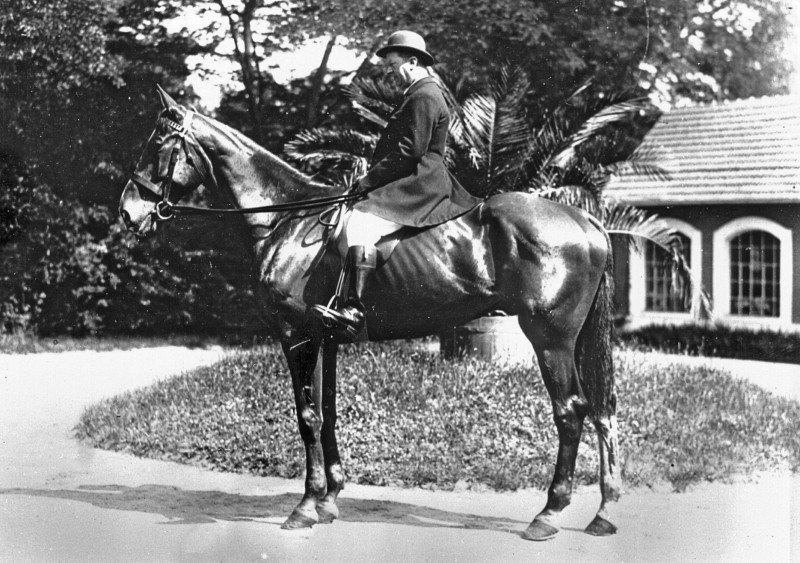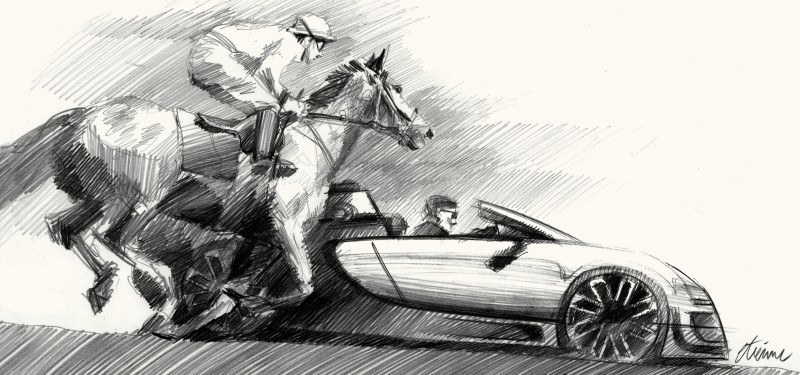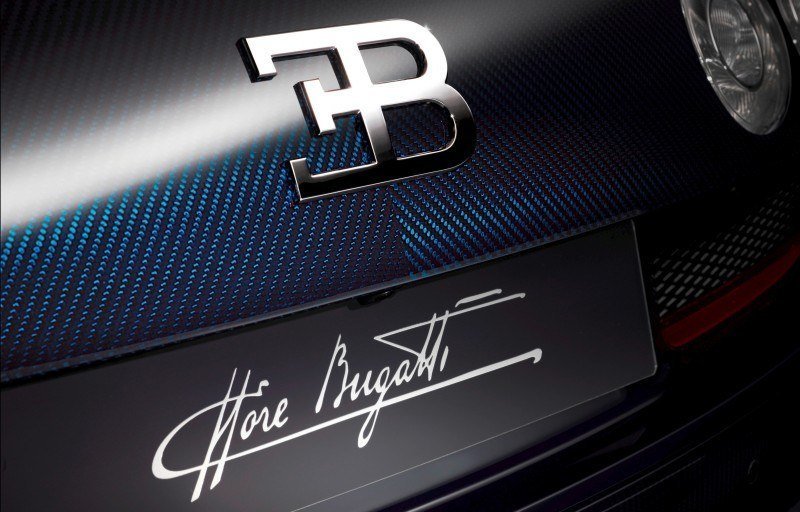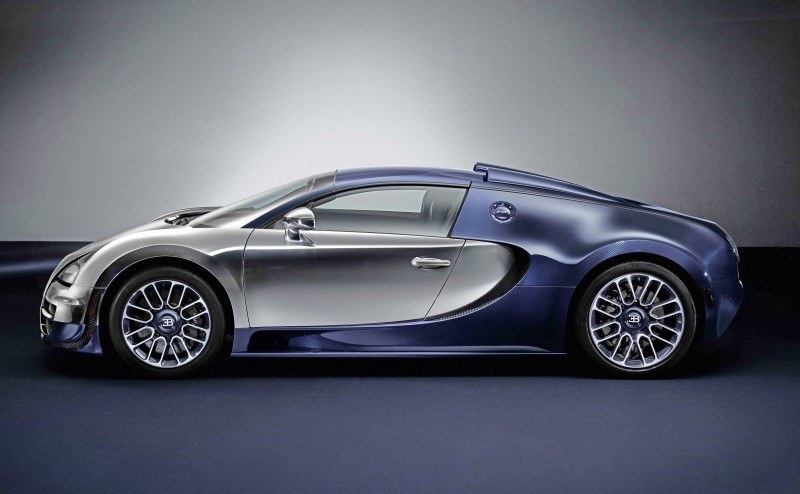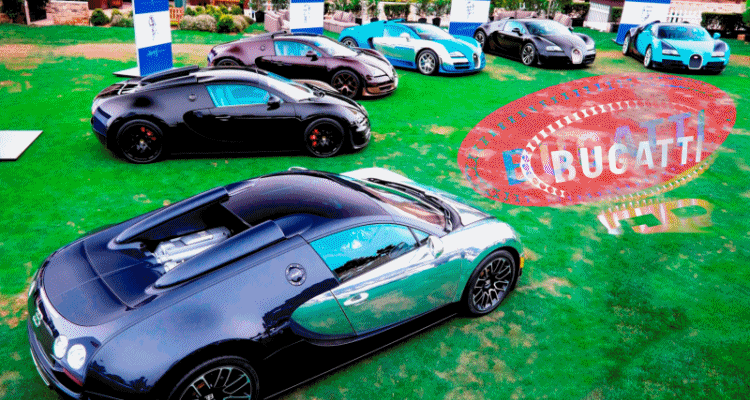A few fashion photos set the mood nicely below for a true event. The amazing Bugatti Legends collection in full. All six Veyron Legends together for their grand society entrance at Pebble Beach 2014.
An intriguing collection of inspirations and honors in the group, with drivers, designers, engineers and, in fact, previous cars as the inspiration for the six Legends of Bugatti.
Which is your favorite?
Or do you have other ideas?
Here is the Veyron Vitesse configurator link to add color your Veyron GS Vitesse dreams…
http://www.bugatti.com/en/vitesse/configurator.html
Bugatti Lifestyle Collection
Black Bess
With its fifth model in the six-part “Les Légendes de Bugatti” (Bugatti Legends) Edition, Bugatti has revived the legendary Type 18 “Black Bess”, which went down in automotive history as one of the first ever street legal super sports cars.
The Type 18 was one of the most important Bugattis of the pre-war era, both ahead of its time and in a league of its own thanks to its impressive technical features. With a 4-cylinder in-line engine and five litre capacity, the vehicle was capable of producing over 100 PS. With a top speed of 160 km/h (100 mph), a feat deemed virtually unbelievable for the times, the Type 18 was a true racing thoroughbred and the fastest road vehicle around.
“Black Bess” Bugatti Legends: from fastest super sports car in the early days of the automobile to fastest super sports car of today
As is the case with all of the Legend vehicles, the “Black Bess” is based on the Bugatti Veyron 16.4 Grand Sport Vitesse*). Its 1,200 PS, 8 litre W16 engine achieves an unparalleled torque of 1,500 Nm at 3,000–5,000 rpm, and can accelerate from 0–100 km in 2.6 seconds. With a maximum speed of 408.84 km/h with the roof down, the Vitesse is the fastest production roadster ever built.
Design – high-quality materials used for the exterior, and international debut of innovative interior detailing
“The ’Black Bess’ Legend Vitesse is yet another fine example of Bugatti’s innovative power when it comes to creating exclusive automobiles,” explains Bugatti Head Designer, Achim Anscheidt. “We have developed a new process for individually hand-painting the leather in the vehicle’s interior, the like of which has never been used before in the automotive industry. The leather and the ink applied by the designer have been technically developed and processed so that they can withstand the stresses inside the vehicle and fulfil the valid quality requirements demanded by modern day production.
Exterior. The body of the “Black Bess” Vitesse is constructed entirely of carbon fibre and, just like its historical predecessor, is painted completely black. The gold-coloured accents that make the Type 18 “Black Bess” so unmistakable are reflected in exquisite fashion on the modern Bugatti. For example, some of the Bugatti’s body components are coated in 24-carat gold. Indeed, this precious material has been used for the striking Bugatti horseshoe, which gleams against the background of the black front grille, creating a truly expressive front view for the Vitesse.
Jean-Pierre Wimille
The Bugatti Legend “Jean-Pierre Wimille” relates to the successes of the eponymous racing driver who won Bugatti two victories at the 24 Heures du Mans: in 1937, driving a Bugatti 57G Tank co-piloted by Robert Benoist, and repeating the feat in 1939, this time supported by Pierre Veyron in a 57C Tank.
The winning race car from 1937 is the inspiration behind the design of the “Jean-Pierre Wimille” Bugatti Legend. For the historic race the 57G Tank appeared in the racing blue finish that habitually identified French racing cars. Accordingly, this Vitesse now shines in blue clear-coated carbon fibre and a light Wimille Bleu paintwork finish.
The colour scheme is continued in the supercar’s interior, as Achim Anscheidt, chief designer at Bugatti, explains: “The materials and colours selected, as well as a host of details, all reference the essential characteristics of the classic models driven by those figures to whom our edition pays homage.”
About Jean-Pierre Wimille
Jean-Pierre Wimille was one of the longest-serving test drivers at Bugatti. The son of a journalist, he was born in Paris on 26 February 1908 and drove almost exclusively for Bugatti throughout his racing career. With a number of victories already under his belt, in 1933 Ettore Bugatti invited him to take up the position of official test driver for the brand. He joined Bugatti at a point when its last great racing triumphs lay a few years in the past, making the string of victories he brought home to Molsheim over the following years even more significant. In his very first year he came first in the Algerian Grand Prix, then in 1935 he collected the title in the then-famous hill climb at La Turbie near Nice driving a T 59, following this with a second place in the Tunisian Grand Prix and fourth place in Spain.
And it was Jean-Pierre Wimille who brought Bugatti what was to be its last ever racing number one, in 1947 at the Bois de Boulogne, behind the wheel of a 4.7 litre Monoposto Type 59/50 B. Wimille was a world-class driver, who played a key role at Bugatti, especially as the brand’s racing era came to an end. His greatest racing achievement was without doubt his twin victories for Bugatti at Le Mans. He died in a car crash in 1949 in Buenos Aires.
Jean Bugatti
With its “Jean Bugatti” Legend model, Bugatti pays homage to a prominent figure in 20th century automotive history. Gianoberto Carlo Rembrandt Ettore Bugatti, known as Jean, was the eldest son of Ettore Bugatti and the most gifted of his four children. From the late 1920s onwards, Jean used his own structural and design ideas to exert more and more influence over the development of the company located in Molsheim, Alsace. In 1936, he took over as head of the company at the age of 27. By the time of his tragic accidental death in 1939, Jean had secured his place in automotive history thanks to his pioneering engine and chassis designs and concepts for vehicle bodies.
Design: For the first time ever, the Bugatti horseshoe sparkles in precious platinum
Meo Costantini
“Meo Costantini embodies the most successful era in Bugatti’s racing history,” says Dr Wolfgang Schreiber, President of Bugatti Automobiles S.A.S. “Ettore Bugatti’s vehicles from the 1920s stand for light-weight construction and technical aesthetics. When Bugatti created the Type 35, he inspired one of the most successful racing cars of all time. The Vitesse ‘Meo Costantini’ is reminiscent of the Type 35.”
Bartolomeo “Meo” Costantini, born in 1889, was the head of Bugatti’s racing team for eight years. He developed an interest in racing cars and began racing at an early age. It was after the First World War that he first came into contact with the Bugatti brand, when he was involved in modifying a Bugatti Type 13. This is the car that Meo would drive during his first races in 1920-21. It was through these races that Ettore Bugatti first became aware of the young Italian’s talents, and he invited him to Molsheim in 1923. The two developed a close bond, and Costantini worked for Bugatti as a racing driver and advisor from that time on. As a member of the factory team in 1925 and 1926, he won the most famous and important race in its time, the Targa Florio in Sicily. In 1926, he also drove to victory at the Spanish Grand Prix and the Grand Prix of Milan, and took second place in Monza. Shortly afterwards he ended his active racing career in order to manage the Bugatti racing team, a post which he held from 1927 until 1935. Costantini stayed at Bugatti until 1937.
Bugatti Legend Car “Meo Costantini”
The series of Bugatti Legend cars, “Les Légendes de Bugatti”, was launched in August at California’s Pebble Beach Concours d’Elegance with the Vitesse “Jean-Pierre Wimille”. This was followed by the Legend car, “Jean Bugatti”, which was presented at the International Motor Show in Frankfurt. Now, the third Legend Edition, dedicated to Meo Costantini, will be revealed to the public for the first time in Dubai. The car is based on the Bugatti Veyron 16.4 Grand Sport Vitesse. Its 8-liter W16 engine achieves an unparalleled torque of 1,500 Nm from 1,200 PS at 3,000–5,000 rpm, and can accelerate from 0–100 km (0 to 62 MPH) in 2.6 seconds. The Vitesse was driven to a top speed of 408.84 km (253 MPH) with the roof down in April 2013, making it the fastest production roadster ever built.
Design
Exterior: The body of the Vitesse Legend “Meo Costantini” is primarily constructed of carbon fiber. The wings, doors, the parts behind the doors, the “medaillons” (French) and corners of the front bumper are rendered in aluminium. The blue paintwork on the carbon fiber parts references France’s classic motor sport color, as well as the Type 35. The new paint color “Bugatti Dark Blue Sport” has been specially developed for the vehicle. The aluminium parts are hand-polished and coated with clear lacquer. Bugatti is the only production manufacturer to offer polished clear-coated aluminium bodywork. Another special feature of this car is that individual parts have two different paint finishes. This requires great skill, and is particularly impressive to see on the wings, which are finished in both clear lacquer and blue paint.
Rembrandt Bugatti
The “Rembrandt Bugatti” is the fourth Legend from the brand. To launch the “Les Légendes de Bugatti” edition last year, Bugatti presented “Jean-Pierre Wimille” at California’s Pebble Beach, “Jean Bugatti” at the IAA in Frankfurt and “Meo Costantini” at the Dubai Motor Show.
The “Rembrandt Bugatti” is based on the Bugatti Veyron 16.4 Grand Sport Vitesse*). Its 8 litre W16 engine achieves an unparalleled torque of 1,500 Nm from 1,200 PS at 3,000–5,000 rpm, and can accelerate from 0–100 km in 2.6 seconds. With a maximum speed of 408.84 km/h with the roof down, the Vitesse is the fastest production roadster ever built.
Design
“Rembrandt Bugatti had a special talent for capturing the movement of animals at their most expressive moment,” explains Achim Anscheidt, Head Designer at Bugatti. “The patina, the soul and the crafted character of his bronze sculptures guided us to the colour and material choices in the Legend car that carries his name.”
Anscheidt continues: “The result is a super sports car that fuses beauty and elegance with great dynamics and sporting appeal.”
Ettore Bugatti
Here is the Veyron Vitesse configurator link to add color your Veyron GS Vitesse dreams…
http://www.bugatti.com/en/vitesse/configurator.html

Tom Burkart is the founder and managing editor of Car-Revs-Daily.com, an innovative and rapidly-expanding automotive news magazine.
He holds a Journalism JBA degree from the University of Wisconsin – Madison. Tom currently resides in Charleston, South Carolina with his two amazing dogs, Drake and Tank.
Mr. Burkart is available for all questions and concerns by email Tom(at)car-revs-daily.com.

